

How to Become a Boat Captain in Canada
Ship’s Captain is as much a dream job as it is a job of the future. Boating around the world and constantly interacting with diverse cultures, the sea captain remains, in the popular mind, a profession of excellence. Although this image of “captain” reigns supreme in our minds, we tend to overlook the complex and competitive path that aspiring captains must face.
In this article, discover the different steps to become a boat captain in Canada.
What does a boat captain do?
By rank within the Navy, a ship’s captain has various duties and responsibilities. Often starting with a navigation officer’s license or as a deck officer, they learn the basics of their future job as captain. This includes learning about the different parts of a boat , nautical safety equipment , navigation tools such as the magnetic compass , as well as safety maneuvers.
Beyond that, once a boat captain has completed their training, they become the sole master on board the boat they sail, regardless of the type of vessel. They must then command ships, ensure the safety of passengers and crews, and make all decisions that apply to a specific situation.
For a quick comparison, the captain is the equivalent of a company director making all the decisions in order to maintain the successful operation of the company.
What skills and qualities does a boat captain need?
Beyond knowing where port and starboard are, a captain must possess certain essential qualities:
- Enjoy traveling and working internationally, with a good command of foreign languages
- Have an interest in marine sciences and professions
- Have a good capacity for analysis, synthesis, autonomy and problem solving
- Have good observational, organizational and leadership skills
- Be dynamic, enthusiastic and disciplined
- Be able to work under pressure and stress in order to make the best possible decisions in any situation
In this job, a ship’s captain must be adaptable and have great confidence in their skills. These are the reasons why it is so difficult to obtain a cruise ship captain’s license, and similar rank, even though the demand remains high.
Boat captain job outlook
By obtaining the rank of captain, lieutenants and midshipmen reach the highest rank of the profession. The future prospects, as we can understand them, concern especially the salary progression, which on average tends to be $100,000 per year in Canada.
What sectors can I work in as a boat captain?
There are four sectors and sub-sectors you can expect to work in as a captain:
- Merchant Marine
- Canadian Coast Guard
- Armed Forces
- Passenger Transportation
Training to become a ship captain
To become a ship captain, it is necessary to obtain both formal academic training and gain personal experience in the profession.
Academic streams
Various degrees and certifications are required to obtain a captain’s license and the first of these is a college degree in navigation. This first step allows candidates to pick up the scientific and mathematical basics that are essential in the profession. They will learn the basics of chart reading as well as the various emergency maneuvers (for example, how to deploy different types of boat anchors ).
Once the basics are learned, midshipmen will also be required to complete 12 months of sea training as an officer of the watch, second officer, and first officer in the merchant marine. In order to progress, each grade will be tested at the end of each year of the college diploma. The goal is to apply the theory learned throughout the certification. Once the officer’s certificate is obtained, the midshipman can start his career as a navigation officer (2nd lieutenant).
It is also possible to complete a Bachelor of Technology in Nautical Sciences offered by the Canadian Coast Guard College. Divided between theory and time at sea, the training program offers a more professional approach to the theoretical, mathematical and scientific bases. Contrary to the college diploma, the bachelor’s degree offers more intensive courses in navigation and ship handling.
Military stream
If you are destined for a military career, the training program offered by the Canadian Forces trains midshipmen to become naval warfare officers. This training is more specialized than the bachelor’s degree. The midshipman will then be directly confronted with the real exercise of their duties, after acquiring the required knowledge and skills. Obtaining the rank of captain is faster.
Other diplomas and bachelor’s degrees lead to becoming an aspiring captain. Other streams include bachelor’s degrees in operations and logistics engineering, or in business administration with a specialization in marine transportation.
Experience in the field
The rank of captain, whether for cruise ships or cargo transports, requires a lot of experience. The experience necessary ranges towards 10 years of active field experience.
Even if you have obtained all the necessary diplomas and certifications for this rank, you will have to progress by passing through as deck officer, towards chief of watch, and other levels. The goal is to gain as much experience as possible, either in the different nautical trades or vessels or the one that really interests you.
Internships, summer work and continuing your theoretical training by taking Transport Canada exams are all ways to gain new knowledge. Without personal experience in the field, you are unable to become a ship captain.
Entry-level positions are possible
If you aspire to be a captain of a ship, don’t hesitate to start at the entry-level. The path to becoming a captain is tenuous and requires hard work. Don’t forget about the prospects for the future and for increasing your skills, because these can become opportunities.
Don’t neglect your first job and invest in it as if it will become your permanent position. The skills and experience that you will acquire will be assets that you will be able to put to good use when you change positions or grades.
Start your career with National Boating Safety School
Becoming a boat captain takes time and experience. Being a competitive profession, all experience and training is helpful in achieving your dream job. That’s why we offer the Transport Canada-approved online boating exam preparation boater safety course .
Register for the boating course now !
Latest Posts
- What is Proof of Competency for Boaters?
- How to Report a Boating Accident
- Life Jackets and Buoyancy Regulations
- What Should Be Included on a Float Plan?
- What Is the Purpose of a Pleasure Craft Courtesy Check?
- February 2024
- January 2024
- November 2023
- February 2023
- December 2022
- November 2022
- September 2022
- August 2022
- February 2022
- January 2022
- December 2021
- October 2021
- August 2021
- September 2014
- Get your card now
- Online Canada Boating Exam
Get your card today

- Vancouver International Boat Show
- Boating BC Conference
- Become a Member
- Sector Groups
- Grants & Sponsorships
- Just Add Water
- Get Certified
- Rent or Charter
- Owning a Boat
- Boating Destinations
- Power Boating
- Boat Safe BC
- Shared Waterways
- Boat Disposal
- Transport Canada Abandoned Boats Program
- Green Boating
- Boating Etiquette
- Protect Our Marine Mammals
- Boating Member Map
- Job Postings
- Apprenticeship Programs
- Glenn Spartz Scholarship
- Member Savings Program
- Promote Your Membership
- Member Documents
- 2023 Boating BC Conference
- Annual General Meeting
- Member Website Manual
Get Certified | Boating BC Association

GET CERTIFIED
Boat with confidence.
Boating is most enjoyable when you’re well-trained and confident in your knowledge and skills. Depending on the type of boating you enjoy, and the level of difficulty you intend to embrace, there are many courses available from basic through advanced training to coastal navigation, anchoring and docking.
START WITH YOUR PLEASURE CRAFT OPERATORS CARD
A Pleasure Craft Operators Card (PCOC) is your Transport Canada (TC) accredited proof of basic competency to operate a power-driven vessel of any size in Canada and is only the first step in your journey to become a confident boater. We recommend additional training for anyone who plans to spend more than a few hours out boating.
You can get your PCOC card by taking an in-person or online course and successfully completing the exam. The card is good for life and is enforceable – if you’re out on the water, make sure you keep it handy as you can be pulled over and asked for it by law enforcement or volunteer officers.
If you are renting a boat for a short period of time, a PCOC is not required by TC. Rental companies are equipped with a TC safety check list, which they’ll walk customers through before heading out.
PCOC is a Transport Canada accredited, for more information, read their detailed FAQ’s .
You can take the PCOC course and exam with these course providers .
BOATING BC EXCLUSIVE - RECEIVE 53% OFF YOUR PCOC LICENSE

Boating BC has partnered with MyBoatCard.com to get you 53 % OFF your Official Canadian Boating License . MyBoatCard.com makes it quick and easy to obtain your boating license online. Risk Free. Free Retries. Use discount code BOATINGBC at checkout. Your boating license, also known as a Pleasure Craft Operator Card , never expires and is valid throughout Canada.

Aceboater is proud to offer you a 55% discount on your online course to obtain your boating license . To obtain the discount, enter code BOATINGBC at checkout.
CanadaBoatSafety.com is a BoatingBC partner, and is proud to offer an over 30% discount to obtain your boating licence .

Only $28.99 for Official Transport Canada-accredited Course, Exam & Boat Licence (known as the Pleasure Craft Operator Card). Includes unlimited exam retries.
Use the coupon code: BoatingBC
Get your Canadian Boating Licence online today! Your Boaters Card never expires and is valid throughout Canada. Click here .
Canadian Power and Sail Squadrons

WHAT OTHER BOATING COURSES ARE THERE?
In addition to your PCOC, additional training is highly recommended for all boaters. Courses are available at these schools in BC and include hands-on training and classroom instruction on everything from how to skipper or crew a boat, operating a marine radio, how to dock, trailer, anchor etc.
Training programs are available from the most basic skill level up to Yacht Master Certification and, as each school calls their courses by a different name, we recommend you contact a school close to you to learn more.
Wherever you choose to take your instruction, you’ll want to ensure that your training provider is certified by BC Sailing (Sail Canada), International Yacht Training or International Sail + Power or Canadian Recreational Yachting Association .

MEMBER DIRECTORY

Boating BC's 300 businesses represent all sectors of the recreational boating industry in BC!
You can search for boating services in your region.
- Skip to main content
- Skip to "About this Web application"
Language selection
- Français fr
Name of Web application
Job requirements captain, offshore fishing vessel in canada.
- Description
- Requirements
- Competencies
Find out what you typically need to work as a captain, offshore fishing vessel in Canada. These requirements are applicable to all Fishing masters and officers (NOC 83120).
Employment requirements
This is what you typically need for the job.
- Some secondary school education is usually required.
- One to two years of experience as a fishing vessel deckhand is required.
- Captains require one year of service as officer in charge of the watch.
- A Fishing Master's Certificate is required for all occupations in this unit group.
- Marine Emergency Duties Certificate is required by Transport Canada.
- A valid Fishing Vessel Operator Certificate is required for all occupations in this unit group.
- A commercial fishing licence is required.
Source National Occupational Classification
Professional certification and licensing
We don’t have any data on professional certification requirements. This occupation is not regulated in Canada based on our records.
Source Foreign Credential Recognition Program - ESDC
Do you want to work in another province or territory?
If you are already certified to work in a regulated occupation in your province or territory, it will be easier for you to have your certification recognized in another province or territory. See the Workers Mobility's website to learn more.
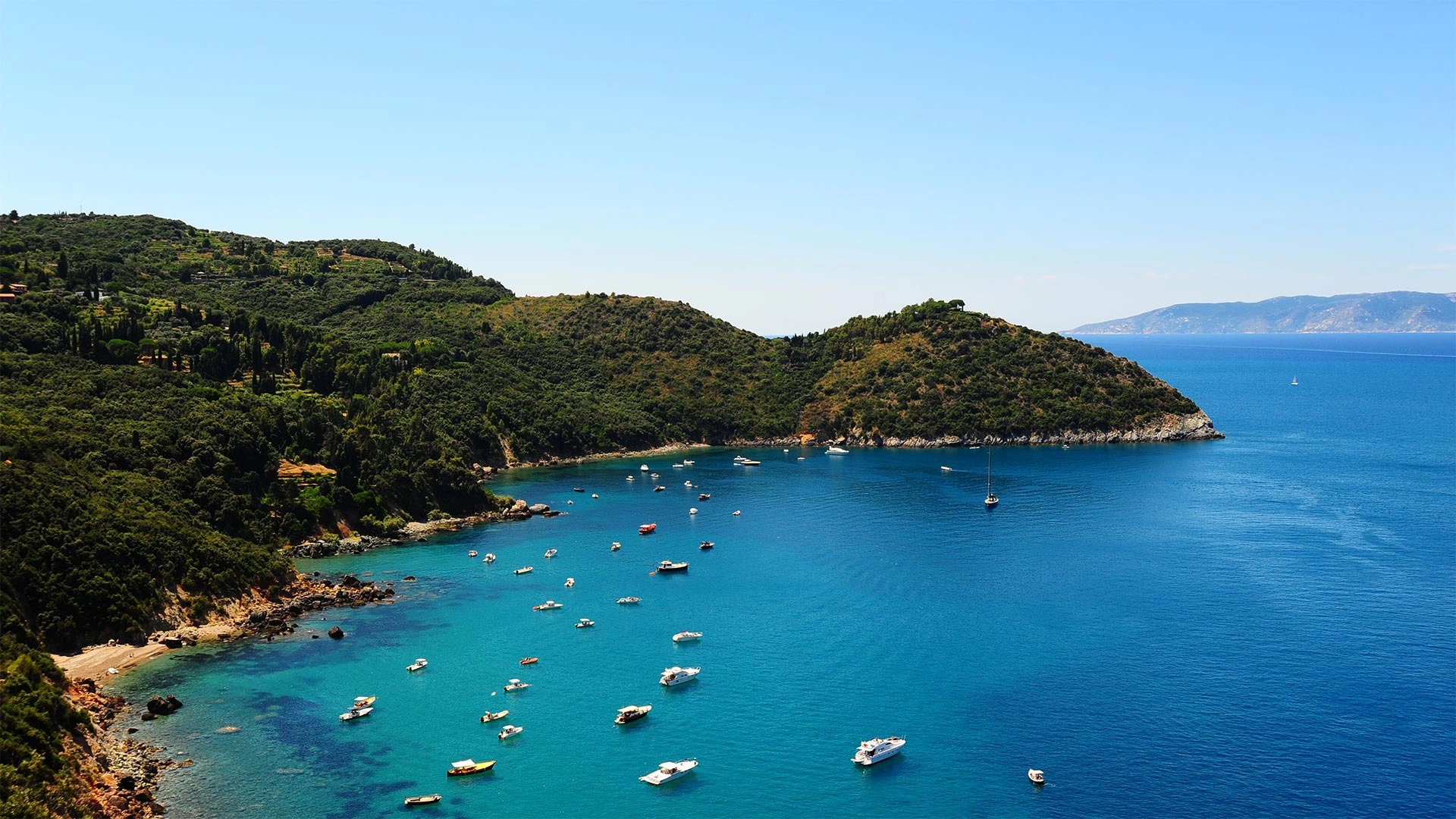
Renew Your Certificate
Recreational courses, superyacht courses, choose your location.
There is an IYT school on six continents. Begin training in the Mediterranean and finish in the Caribbean. Wherever you choose to be! IYT’s unique modular approach to yacht training has allowed the successful establishment of global partner schools offering a broad range of recreational and professional courses.
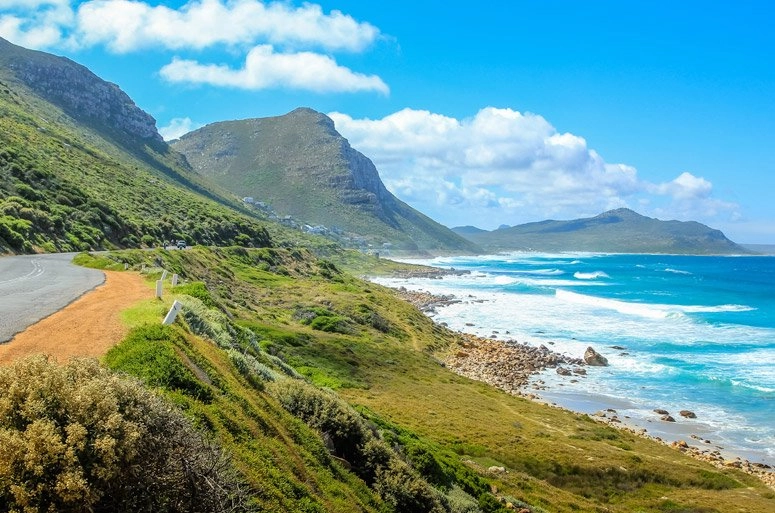
North America

South America

Learn to Sail
Become A Partner School
- Upgrade Your School
Government & Organization Approvals
- Recreational
- Privacy Policy & Terms Of Use
- Become a Partner School
- Register with IYT
- Find a School
- IYT E-Learning
- Certificate Renewal & Replacement
- Get Certified
- Recreational Training Course Progression
- IYT Passport
- Crossover Opportunities
- Course Progression
- Course Progression Interior
- Dive Boat Training
- Forms And Docs
- Instructor Training
- Personal Watercraft Operator
- Dinghy Sailing Programme
- IYT Try Sailing
- IYT Introductory Sailing Skills
- IYT Day Skipper / Crew Sail
- International Crew
- International Flotilla Skipper
- International Bareboat Skipper
- International Flotilla Skipper Sail – Catamaran
- International Bareboat Skipper Sail – Catamaran
- International Certificate of Competency (ICC Certificate)
- Powerboat Skipper
- Yachtmaster Coastal (Power or Sail)
- Yachtmaster Coastal Sail – Catamaran
- Yachtmaster Offshore (Power or Sail)
- Yachtmaster Offshore Sail – Catamaran
- Yachtmaster Ocean
- Patron de Yates (Yachtmaster Coastal Spanish edition)
- Marine Communications (VHF-SRC)
- Small Powerboat and Rib Master (MCA Recognised)
- IYT Commercial Tender License Course
- Weather Master
- Navigation Master
- Master of Yachts Coastal/Mate 200 Tons (Power or Sail)
- Master of Yachts Limited (Power or Sail)
- Master of Yachts Unlimited
- Superyacht Chef
- Superyacht Deck Crew Course
- Superyacht Hospitality Training
- Boat Engineer Course (SCV Code for Vessels Operating in the Caribbean)
- IYT-MSWI BoatMaster Course
- Become An IYT School
- Find A School
- Course Levels
- Instructor Qualifications
- Vessel Requirements
- Vessel and Facility Requirements
- Unauthorised Schools and Other Entities
- Shipping & Delivery
- Government Approvals

How to Become a Yacht Captain- An Expert’s Handbook
Do you want to become a yacht captain? Having watched my husband climb the ranks over the past 12 years, I have first-hand experience of seeing what it takes to become a yacht captain.
We started working on a small catamaran in the Seychelles, and today, he is the successful Captain of a world-traveling 50m super yacht.
Becoming a yacht Captain requires a significant investment of time and money, but the reward of commanding your own vessel and crew is immeasurable.
Let’s explore what it takes, including the salaries, necessary skills, and certifications.
Table of Contents
Job Description of a Yacht Captain
The Captain of a superyacht is responsible for the safe navigation of the vessel, the safety of the crew onboard, as well as protecting the environment.
They are the primary source of communication with the yacht owner, guests, and management company.
They also handle all the daily operations of the yacht, including crew management and safety training. The Captain deals directly with management companies, port control, maritime legislation, budgets, accounting, and human resources.

Yacht Captain Salary
The below super yacht Captain salary guideline is based on my personal research using an average of over 10 major yachting platforms:
- 20m-30m: $4000-$7500 p/m
- 30m-40m: $5500-$9500 p/m
- 40m-50m: $8000-$15000 p/m
- 50m-70m: $13000-$19000 p/m
- 70m+: $16500+ p/m
Additionally, with longevity a yacht Captain can also expect to see discretionary annual raises and bonuses.
If they work on a Charter Yacht there will also be charter tips received averaging $2500-$5000 per week of chartering.

Roles and Responsibilities of a Yacht Captain
The job of a Yacht Captain can be compared to that of a CEO, CFO, and COO of a large corporation. The responsibilities are huge.
On a smaller vessel of 35m or less, the captain will need to be more hands-on, and they will likely also be the engineer of the vessel.
However, as the vessel size increases, you will have larger teams and heads of departments to assist in delegating tasks.
Roles and Responsibilities
- Crew Management and training
- Hiring and dismissals of crew
- Human resources
- Accounting and budgeting
- Safe navigation of the vessel
- Safe navigational planning
- Marine and environmental protection
- Vessel maintenance – planning yard work and refits
- Owner and guest liaison
- Planning of guest trips and itineraries
- Ensuring the yacht is compliant with maritime law
- Ensuring the yacht is compliant with all flag state safety regulations
Soft and Hard Skills
When it comes to the question of how to become a yacht captain, besides the required licenses, it is essential to hold certain soft and hard skills:
- Strong leadership skills
- Team management
- A quick thinker and problem solver
- Calm under pressure
- Exceptional communication skills
- Diplomatic in decision-making
- Excellent boat handling skills
- Navigational skills
- Administrative skills
- Organizational skills
- Computer literate
- Strong understanding of maritime legislation

Mandatory Certifications for How to Become Yacht Captain
The license required when identifying how to become a Yacht Captain is dependent on the size/tonnage of the vessel they wish to drive.
Your entry-level Captain license is the Yacht-Master 200 ton. This allows you to drive a vessel of under 200 tons, which is approximately 35m/100ft.
From there, with enough sea time and experience, you can move up towards the Master 500 and then Master 3000 tickets.
If you were to start from scratch, you would first want to look at how to become a deckhand . This will give you all the information and guidance you require before you get to the point when you are ready to start your master’s licenses.
Here is the order in which you would complete your courses:
- ENG1 Medical
- Efficient Deckhand (EDH)
- Yacht-Master Offshore (200ton)
- Yacht-Master Ocean (200 ton)
- OOW (Officer of the Watch)
- Chief Mate 3000
- Master 500 ton
- Master 3000 ton
Yacht Master Offshore 200 ton Limited
Holders of this certificate can Captain a yacht up to 200 gross tons and must be within 150 nm from a safe haven whilst doing so. This course is also required to legally stand watch on a vessel of up to 500gt.
The course consists of theory and practical work and takes 13 days to complete.
Pre-requisites for Yacht Master 200t Limited:
- 3,000 nautical miles while cruising at sea
- 50 days at sea as an active crew member
- 5 days as skipper on vessels less than 24m LOA
- 48 hours on watch at night underway as an active member of a yacht’s crew. During at least six hours of this nighttime experience, the candidate must have acted as the vessel’s captain or watch leader.
- A GMDSS-compliant Marine Radio Operator’s Certificate such as the RYA Short Range Certificate or higher
- All qualifying sea time must be within 10 years prior to the exam

Master of Yachts 200 ton Ocean Unlimited
This certificate allows the holder to be in charge of a commercial yacht of up to 200 gross tons on unlimited voyages.
This comprehensive six-day course on celestial navigation is designed to equip future yacht Captains with the knowledge necessary to navigate the globe using a sextant and air navigation tables.
Additionally, it will enable them to plan, undertake, and manage an ocean passage with confidence.
Pre-requisites for the Master 200 ton Unlimited:
- Before enrolling in the course, candidates must have completed two voyages of 250 miles each or one voyage of 500 miles. The majority of the journey must take place out of sight of land, which means being at least 20 miles away from the shoreline.
- For the qualifying voyage, it is expected to create a passage plan that can be reviewed during the course.
Officer of the Watch (OOW)
In order to obtain the MCA Officer of the Watch (Yachts Less Than 3000 GT) Certificate of Competency, candidates must complete seven distinct modules. These modules are designed to prepare candidates for the MCA oral exam.
Pre-requisites for the OOW:
- IYT Master of Yachts Limited certificate
- A minimum of 250 days of actual sea service
- 115 days can be either sea service, stand-by-service or yard service
- A Completed MCA approved training record book
The 7 modules include:
- Navigation and Radar (15 days)
- General Ships Knowledge GSK (5 days)
- Proficiency in Survival Crafts and Rescue Boats/Advanced Sea Survival (3 days)
- Human Elements and Leadership Management HELM (3 days)
- Global Maritime Distress and Safety Systems (GMDSS)
- Efficient Deckhand EDH (5 days)
- Electronic Chart Display and Information ECDIS (5 days)
- MCA OOW Deck Oral Prep Work (12 days)

Chief Mate 3000GT
After obtaining the Officer of the Watch certification for yachts less than 3000gt, you can apply to the MCA for the endorsement of the Chief Mate (Yachts less than 3000gt) Certificate of Competency. It is possible to apply for both certifications at the same time.
Course Modules include:
- STCW Advanced Fire Fighting (4 days)
- Proficiency in Medical First Aid (4 days)
- Human Elements of Leadership Management – Management level (4 days)
Master of Yachts (500GT)
This certificate is required in order to Captain a yacht of up to 500 gross tons.
Requirements for the course:
- 12 months as a watch-keeping officer with an OOW Certificate
- A valid ENG1
Modules include:
- Stability (5 days)
- Business and Law (5 days)
- Navigation and Radar with ARPA Simulator (10 days)
- Seamanship and Meteorology (5 days)
- Celestial Navigation Refresher and Exam (5 days)
- Proficiency for persons in charge of medical care onboard a ship (4 days)
Master of Yachts (3000GT)
This certificate is required in order to Captain a yacht of up to 3000 gross tons.
The modules for the Master 3000GT are the same as that of the Master 500. If you pass all the modules and have met the requirements for the Master 3000GT, you can skip the Master 500gt Course and do the exam and oral for the Master 3000GT.
Requirements include:
- including not less than 240 days watch-keeping service whilst holding an accepted OOW Certificate of Competency (CoC).
- All of this service must be completed in vessels of 15m or over in load line length and include 12 months in vessels of 24 m or over in load line length, or 6 months in vessels of 500gt or more.
- A valid ENG1 Certificate
Final thoughts
Most crew don’t anticipate the significant amount of time and money it takes when wondering how to become a yacht Captain.
My advice to you is to start logging your sea time from the very beginning and plan ahead. You don’t want to miss out on opportunities due to not having the required license.
If you are still looking for more detailed information or if you are looking to book a course, head over to the PYT website. They are an MCA compliant training facility with schools in Fort Lauderdale and South Africa.
Good luck on your journey. I hope to see you out in the big blue ocean commanding your own vessel one day.

Hi, my name is Lisa, a Chief Stewardess in the yachting industry with 10 years of experience, as well as 8 years of hospitality experience prior to that. Being in the yachting industry has been a whirlwind of adventure, growth, challenges and some of the best experiences of my life, and I am excited to share my knowledge and experiences with all of you.
I am Starting a Boat Tour Business. What Documents Do I need?
A boat tour business will be deemed a commercial operation under the Canada Shipping Act, 2001 and therefore subject to different rules, unlike the transport Canada pleasure craft licence , which is quite easy to obtain. Any waterborne enterprise opened for the express purpose of making profit comes under the banner of commercial. The certification and licensing of commercial vessels depends on different factors, such as intended use and size. All crafts operating in Canadian waters should be registered, but various agencies within Transport Canada deal with different categories of commercial vessels. The official information as set out on the government websites seems contradictory and overlapping. Before venturing to set up your business, it would be worth your while to consult with maritime document and law experts that can guide you as to what boat trip business documentation is necessary. As an example, there are two agencies under which your tour business could fall under.
Canadian Register of Vessels
- The information states that all commercial vessels of over 15 gross tonnes must be registered on that register.
- Any vessel that has a mortgage attached to it must be on the register.
- Also, if the operators or owners intend to take the vessel outside of Canadian waters.
Small Vessel Registry
- All commercial craft of over 15 gross tonnes with ten horsepower or 7.5 kW motors can be registered here
- Other kinds of commercial craft, such as barges, rafts or ferries can also be licensed on that register.
- All Canadian government-owned vessels.
It also states it is not necessary to apply to the Small Vessel Registry, if the craft doesn’t have a mortgage, doesn’t an ‘official’ name or is not going outside of Canadian waters.
Boat Tour Business : Applications
The first step in registering your vessel is to apply for a certificate of registry. If you have changed the use of a pleasure craft to one of commercial uses, then your Transport Canada pleasure craft licence is invalid, and you will have to reapply to the correct register. A change of use from pleasure to commercial craft will entail more documentation and greater detail when filling out the forms. Additional documentation will be required and to ensure the process proceeds smoothly, without delays because of simple mistakes, it would be far simpler and more comfortable to use a registration website such as https://canadianvesselregistry.ca/ to see you through the complex rules and regulations involved in registering a commercial vessel enterprise.
Inspection Certificates
All commercial vessels between 15 and 150 tonnes are required to have inspection certificates by Transport Canada, and this includes vessels of less than 15 tonnes that carry more than 12 passengers at a time. Regular inspections are necessary and will depend on the use of the craft.
Commercial vessels cannot be put into service before being inspected and obtaining a valid operating certificate. After the first inspection, all subsequent inspections are the owner’s responsibility. These are done through the local Marine Safety office. Inspections are made every year, or every four years depending on the frequency of use. It is necessary to know which inspection schedule your vessel requires. The inspections are carried out both externally and internally and cover a list of 16 points. You are obligated to inform the inspector of any changes that have been made to the vessel. Vessels that are over 15 tonnes and carry more than 12 passengers have a mandatory four-yearly inspection. Any vessel over 24 metres and operating under the Canadian flag will also need four yearly inspections. Under the Delegated Statutory Program, the Marine Safety office will carry out checks using approved third-party organisations.
Other Considerations
Other factors to take into consideration when operating a boat tour business are passenger safety and crew manning levels. It is necessary to comply with the regulations if you are planning to do commercial boat tours. Rules and regulations concerning crew are to be found under the Marine Personnel Regulations . The first two parts deal with competency, i.e. the training, qualifications, and certificates the members of the crew hold. It also covers mandatory manning levels of the type of business you propose and what kind of qualified personnel is necessary. Unlike the Transport Canada pleasure craft licence , a commercial certification involves more than just one person. A small boat owner can legally use his craft with a pleasure craft operator card, but whoever pilots a commercial vessel venture may well need to be a Certified Master. The third part of the regulations deals with marine labour standards. Hours of work, obligation and rights of seafarers.
Boat owners now have to comply with the new safety standards and requirements that were added when the 2001 Shipping Act was amended in 2006. These cover more protection for individuals, due care and attention towards others, and necessary assistance.
By: National Vessel Registry | July 1, 2023
in Canadian Vessel Documentation , National Vessel Registry
Use the following for reference:
- PRO Courses Guides New Tech Help Pro Expert Videos About wikiHow Pro Upgrade Sign In
- EDIT Edit this Article
- EXPLORE Tech Help Pro About Us Random Article Quizzes Request a New Article Community Dashboard This Or That Game Popular Categories Arts and Entertainment Artwork Books Movies Computers and Electronics Computers Phone Skills Technology Hacks Health Men's Health Mental Health Women's Health Relationships Dating Love Relationship Issues Hobbies and Crafts Crafts Drawing Games Education & Communication Communication Skills Personal Development Studying Personal Care and Style Fashion Hair Care Personal Hygiene Youth Personal Care School Stuff Dating All Categories Arts and Entertainment Finance and Business Home and Garden Relationship Quizzes Cars & Other Vehicles Food and Entertaining Personal Care and Style Sports and Fitness Computers and Electronics Health Pets and Animals Travel Education & Communication Hobbies and Crafts Philosophy and Religion Work World Family Life Holidays and Traditions Relationships Youth
- Browse Articles
- Learn Something New
- Quizzes Hot
- This Or That Game New
- Train Your Brain
- Explore More
- Support wikiHow
- About wikiHow
- Log in / Sign up
- Occupations
- Transport Careers
How to Become a Boat Captain
Last Updated: July 28, 2022 References
Getting a Job
Expert q&a.
This article was co-authored by Nitzan Levy . Captain Nitzan Levy is a Sailor, Social Entrepreneur, and the Founder of Sailors NYC, a recreational sailors’ club based in Jersey City, New Jersey that specializes in cruising boats and a variety of community programs. Capt. Levy has over 20 years of sailing experience and has sailed in many places around the world including: the Atlantic Ocean, the Mediterranean Sea, The Caribbean, and the Indian Ocean. Capt. Levy is a U.S. Coast Guard Licensed Master of vessels up to 50 Tons with Auxiliary Sail and Assistance Towing Endorsements. Capt. Levy is also a NauticEd Level V Captain Rank Chief Instructor, an American National Standards Assessor, an SLC instructor, an ASA (American Sailing Association) Certified Instructor Bareboat Chartering, and an Israeli licensed skipper on Boats for International Voyages. There are 10 references cited in this article, which can be found at the bottom of the page. This article has been viewed 130,611 times.
Becoming a boat captain can be a time-consuming but rewarding process. A captain’s license isn’t necessary if you just want to take your own boat out for pleasure cruises, but it is required if you receive any compensation for your boat services. With the right education, experience, and test scores, you will be on your way to becoming a licensed boat captain.

- Learn communication skills through English classes and other language classes.
- Also consider taking computer classes and mechanical drawing classes.

- Get a degree in the field of marine transportation, marine engineering, maritime operations and technology, or shipyard management.

- Even if you can’t afford a full 4-year education, try to audit some maritime-related classes at your local university or community college.
- Look for classes offered by local organizations like the yacht club or sailing club.

- If you live near a coast, look for local businesses that specialize in these classes. If there's nothing near where you live, you can take an online course.
- These courses end in a written exam that can often stand in for the official exam. Check the Coast Guard website to find approved courses. [4] X Research source

- If this sea-time is spent under another captain's command, you will need to have this captain sign your license application when the time comes.
- Any time spent on a boat counts. So include hours working in positions such as a maid or deckhand on a cruise ship.

- Some positions to aim for are deckhand, third mate, second mate, chief mate, or engineer.
- Look for positions like tour guide, dockhand, sanitation officer, or boat mechanic.

- If it's not necessary, simply provide a statement with your application that says you don't need it.
- If a TWIC card is necessary for you, you can apply for it through the TSA.

- The Master license involves far more sea-time hours, but there’s no need to get the six-pack license first. Jump right to the Master if that’s the one you want.

- Additional identification will be required, such as a social security card or an I-551 alien registration card.

- You can submit your application and any supporting documents in person at a local Regional Exam Center (REC) or send it to the REC through the mail.
- If you're outside the U.S., you'll need to apply for the International Certificate of Competence (ICC) through the Royal Yacht Academy.

- References from licensed captains, commercial fishermen, or others who own and operate their own boats are generally best.
- These character reference letters should also be notarized.

- This exam will usually consist of multiple choice questions about deck and safety procedures, general navigation, and rules associated with operating a boat in shared waters. [17] X Research source

- If your application is approved, your license and credentials will be printed and mailed to you.

- Join your local yacht club or sailing club to make more contacts there.
- Go mingle with other captains at local docks and start up conversations with them. They may know of more job openings.

You Might Also Like

- ↑ https://bigfuture.collegeboard.org/careers/transportation-ship-captains-marine-pilots
- ↑ http://education-portal.com/become_a_ship_captain.html
- ↑ http://study.com/become_a_ship_captain.html
- ↑ http://www.dco.uscg.mil/Portals/9/NMC/pdfs/faq/exams_faqs.pdf?ver=2017-07-13-110959-517
- ↑ http://matadornetwork.com/notebook/how-to-become-a-boat-captain/
- ↑ http://www.payscale.com/research/US/Job=Ship_Captain/Salary
- ↑ Nitzan Levy. Sailing Instructor. Expert Interview. 24 April 2020.
- ↑ http://www.dco.uscg.mil/Portals/9/NMC/pdfs/faq/twic_faq.pdf?ver=2017-05-31-144812-903
- ↑ https://asa.com/news/2013/08/12/uscg-captains-license/#
- ↑ http://www.dco.uscg.mil/Our-Organization/Assistant-Commandant-for-Prevention-Policy-CG-5P/National-Maritime-Center-NMC/merchant_mariner_credential/
About This Article

If you want to become a boat captain, obtain your high school diploma or GED. After school, enroll in a captain’s license class or a college program where you’ll learn about navigation, tidal calculations, international and inland boating rules, and meteorology. Before you can obtain a captain’s license, you must have a minimum of 360 days worth of sea time within a 5-year period, where a “day” is 4 consecutive hours on the water. This can be piloting the boat or working as a deckhand on a cruise ship. For more information on getting your license, read on! Did this summary help you? Yes No
- Send fan mail to authors
Reader Success Stories
Aug 30, 2016
Did this article help you?

John Williams
Dec 7, 2021

Featured Articles

Trending Articles

Watch Articles

- Terms of Use
- Privacy Policy
- Do Not Sell or Share My Info
- Not Selling Info
Don’t miss out! Sign up for
wikiHow’s newsletter

How to Get Your Captain’s License –A Step-by-Step Guide
From captain requirements to the coast guard application process – how to navigate the process of becoming an official boat captain.
Like all other areas of professional endeavor, getting a Captain’s license is an essential and non-trivial process. Despite the years between my earliest thoughts on having one and actually applying…or perhaps because of that time…I am quite proud to call myself Captain !
From the time I was Quartermaster aboard the Chesapeake Lightship back when she was berthed in Washington, DC, I had wanted to get my Captain’s license. We in her crew had plenty of sea time. The late Capt. Joe Murray, John Hart, and particularly Chris Krusa saw to it that each of us developed our skills and knowledge beyond the minimum that we needed for our jobs. We met collectively with a Coast Guard officer to explore the options for us all getting licensed; however, the wind was taken out of our sails so to speak when he told us that since most of us were not 18, we were not entitled to take the written exam.
I left that session crestfallen but I put it all behind me as I moved on with a career in research physics. Later, I learned that what the officer SHOULD have said is that if we had just waited (a few months) until we turned 18, we could have taken the exams. Years later, my problem was that I could not meet the requirement to have 90 days of sea time in the last 3 years. My employer would have more than frowned on my having been gone so often. And all of us had not even bothered to ask for sea service forms or letters to document our time on the Chesapeake.
Fast forward 34 years and serendipitous events led to my being able to get signed sea service forms for my time on the Lightship. Shortly thereafter, I became a boat owner WITH vacation time afforded to a very senior engineer in the company.
Long story short, I am Capt. Rob Chichester – 200 Ton Master with Auxiliary Sail and Assistance Towing Endorsements.
Navigating the path to a Captain’s license can be full of the brambles of regulations, forms, and oddly worded requirements. In this article, I will try to clarify the process and help interested skippers decide what type of license, scope, and tonnage they should pursue. Then I will discuss the application process and all the elements needed to assemble a successful license application package.
More Resources: If you would like a one-on-one consultation to have your specific questions answered on this topic or others related to boating, please sign up for 30 minute video consultation with me!
The Basics of a Captain’s License
A first time applicant will need to decide while type of license to pursue. There are two types available to one applying for a new license.
- You may apply for a license to be an Operator of Uninspected Passenger Vessel (OUPV) or the more familiar “Six Pack” license. It is so called because the holder of this license is limited to carrying no more than 6 paying passengers on any vessel within his tonnage rating regardless of the maximum capacity rating for the vessel.
- The other option is a Master’s license which allows you to carry up to the maximum number of passengers indicated for the vessel in question. Whereas a Master’s license requires US Citizenship, an OUPV license holder can be non-US citizen. Clearly holding a Master’s license offers more opportunities; however as I will explain later, the knowledge requirements are appropriately greater.
The scope or route for one’s license is the waters in which you are authorized to function in your licensed capacity.
There are effectively three such areas defined:
- The first is Inland which covers all inland rivers and bays not otherwise outside the demarcation line for the high seas. This may also include portions of the Great Lakes up to the International boundary line. (I will not explicitly discuss the Great Lakes or Western Rivers in this article but those waters are also covered by an Inland scope with a specific endorsement for each.)
- The second route is near-coastal which means ocean waters not more than 200 miles offshore. By extension, a near-coastal route endorsement includes inland waters as well.
- Lastly, Oceans refers to all waters seaward of the Boundary Lines as described in 46 Code of Federal Regulations (CFR) Part 7.
Tonnage rating is determined by the size vessels upon which an applicant has served. The tonnage is not simply the weight or displacement of a given vessel. It is not how much stuff you had loaded on a boat. It is a calculation of theoretical displacement if the complete available interior volume of a ship were filled with material of density 1 (i.e., water).
There are formulas available to estimate that based on the dimensions and type of boat. The calculations are necessarily different for a sailboat and a power boat. On a very rough order of magnitude, a 100 Ton powerboat would be about 80 feet long and a 100 Ton sailboat would be about 100 feet long. The tonnage rating is a not to exceed limitation.
One need not necessarily serve on a 50 ton or 100 ton vessel to earn the equivalent tonnage rating (see the table below for specifics on that). One cannot be granted more than a 100 Ton rating on an initial license because higher tonnage requires that one has served in a licensed capacity before applying for the higher tonnage. When I renewed my license in November, I applied for a 200 Ton rating which was granted conditional to my successfully passing the mandated written test. By the time you read this, I expect to have taken that exam.
Tonnage and route are determined by one’s documented experience. While you may apply for a 100 ton rating, you may only be granted 50 tons (or less) if your experience does not justify the higher rating. Additionally, the greater the scope, the more sea time is required to qualify for the rating.
For example, while an Inland scope needs 360 days of total sea time with 90 days in the last 3 years, a near-coastal scope requires 720 days and again the 90-day recency requirement. The take-away here is that experience is a big determinant and should NOT be discounted in any way. Note that there is no path to being granted an Ocean scope except by being a licensed mate or master for at least 2 years with documented service on those waters. That is, it is impossible to apply for an Oceans scope on a first application.
It should be noted that an OUPV license is automatically issued with a 100 Ton rating. As coarse as this may sound, the reason is that it is assumed that with an OUPV license, the most damage one can do is to 6 people. Therefore, there is no particular benefit to issuing OUPV with varying tonnage ratings. New Master’s licenses are issued with ratings of 25, 50, or 100 tons. Discussions of ratings over 100 tons or Ocean routes are beyond the scope of this article. You may contact the author if you wish more information on those specific topics.
The table below is a guide to determining for what rating one may qualify.
Your Sea Time Experience
For a Near Coastal route, ideally, all of your time will be on Near-Coastal waters; however, you are allowed to substitute up to half of the 720 days required minimum with Inland route service. For the purposes of documenting sea time for a Near Coastal route, any time served beyond the 3-mile limit counts for that purpose. So if you charter in the Caribbean or crew on an offshore fishing trip, that time counts.
Just to be clear, sea time is not counted unless you are a working member of the crew of the vessel named on the sea service form. That is to say, just being a passenger is not sufficient.
To keep things on the up and up, the applicant is required to get the signature of the owner, manager, or master of the vessel on the sea service form. If the applicant owns the identified vessel, proof of ownership must accompany the form. Proof might be a Bill of Sale, vessel document, or a state registration.
Sea time is not counted unless you spend at least 4 hours of a given day underway . Being onboard the boat at the dock swabbing the decks does not count. Time underway is counted whether it is in route or adrift. Being anchored or moored also does not count. It can be tedious to collect and collate all of your sea service forms, especially after the fact. My best advice is even if you are only thinking about getting a license, keep blank sea service forms with you for the vessel operator to sign at the end of a trip. Note that the forms are not per trip but per vessel. There is room to document up to 5 years of sea time on any given vessel. There is room for five years of data because your license will be up for renewal every 5 years .
Technically, vessels over 200 gross tons now require a Service Letter from the employer or vessel manager. However at the time I applied for my original license, I submitted my time on the Chesapeake Lightship on a Sea Service form (CG-719S). That form was accepted for that as well as again when I renewed and requested an upgrade to 200 Tons. I may have been grandfathered so new applicants should verify their individual situations with the National Maritime Center .
Health and Medical
To be a Captain, one must be in good health and of reasonable physical ability. The Medical form ( CG-719K ) is the most extensive form one will need to complete. It also requires the signature of a licensed physician. Unlike an FAA pilot’s license, the physician need not be approved by the US Coast Guard. Your family doctor is acceptable.
For my part, I completed as much of the form as was reasonable. I then FAXed the form ahead of my annual physical so that the doctor could review what was needed and to be prepared to sign off on it. The only extra thing the doctor had to do was conduct color vision and standard wall chart vision test. Your vision need not be perfect without glasses but if that is the case, you should expect a requirement to be written on your license requiring corrective lenses to be used and a spare pair to be available when on duty. If your medical form is accepted, you will be issued a separate medical form which is to be kept with your Merchant Mariner Credential. There is a pocket on the back cover to hold it and the required Transport Worker’s Identification Card ( TWIC ). The TWIC will be addressed below.
Another form to be completed, this time by an authorized physician, is the DOT five-panel drug test . An applicant must submit proof of drug testing with no findings as determined by an authorized physician. Also be aware that to work aboard any vessel in any compensated capacity, you must have proof of participation in a drug test program, whether it be one in which you elect to participate as an individual or one required by your marine employer. Such proof is to be carried with you at all times just as your license and medical certificate must be. It is generally in the form of a letter attesting to your compliance and passing a test within 12 months of the date of the letter.
Criminal and National Security Background
One has always been required to agree to a criminal background and driving record check . As you can well imagine, adverse findings in either of these areas will negatively affect one’s application.
With the creation of the Department of Homeland Security (DHS), a requirement was added that licensed mariners have a TWIC card . In fact, anyone working in the transportation sector (air, rail, marine, trucking, etc.) is required to have a TWIC card. You will be investigated for any evidence of threat potential to national security. This is because as a licensed Captain, you may have access to vital and strategic marine facilities.
The TWIC card is issued by DHS through a federal contractor. There is an application to complete and a fee to pay. Furthermore, you must appear in person so that your photo and fingerprints can be taken. This bio-metric data is stored on the TWIC card and protected by a pass code. You must submit a copy of your TWIC with your license application; therefore, one must start the TWIC process at least four to six weeks or more before submitting one’s license application.
Separately, a photograph of the applicant must accompany the application. This can be a driver’s license or passport photo . It should be a state or federal government issued document. Others may be accepted but the applicant should verify this with the NMC before submitting the application to avoid processing delays.
- Coastal Navigation
- Deck General Knowledge
- Rules of the Road
Deck General includes a wide variety of topics including fire and safety, terminology, and laws and procedures. Rules of the Road covers exactly what it says. Bear in mind that even if you are applying for an Inland or Near Coastal license, the Rules of the Road test will include elements of International Rules. So when you are studying, do not neglect to familiarize yourself with those details. There are some variations in vessel precedence, sound signals, and lights and shapes displayed by vessels.
If you are applying for a Master’s license, there are additional areas of test. The same is true if you are additionally requesting an endorsement for Sail, Auxiliary Sail, or Commercial Assistance Towing. The net effect is more questions overall.
You must score at least 70% in all areas except Rules of the Road for which you must have a minimum score of 90% to pass . Generally, that means you may miss no more than 3 questions to pass with a 90% grade. The Navigation questions will require you to work with a chart to plot position, routes, and so forth.
You may either pay an examination fee to take the exams administered by the Coast Guard or you may enroll in any number of approved Captains’ courses. You will receive a certificate of completion from the school to submit with your application in lieu of the Coast Guard exams; however, you will still take exams which include questions from the same list of questions that the Coast Guard uses. In the latter case, you will not need to pay an examination fee but obviously, you will have to pay a tuition for the course.
Completing your Application
The license application is not unlike many others. It is actually shorter than the medical form discussed earlier. There are two things to note on the application:
- Item 1 of Section IV describes how one may be asked to serve on behalf of the country in times of national emergency. An example of this was the massive sealift conducted in support of the first Gulf war in the 1980’s, Operation Desert Storm. This is a voluntary action. However it should be noted that during the call up for Desert Storm, more mariners were needed than responded. It is a possibility, particularly in these times, that another such national emergency could arise.
- Secondly, Item 5 of Section IV contains an oath to which an applicant must swear. If you present yourself in person you will be sworn in by Coast Guard personnel. If you choose to submit your application by mail or electronic means, you must provide proof that you appropriately took the oath as written. This generally means being sworn by a Notary or a local government official such as a county clerk.
Payment of all required application and examination fees is made online prior to submitting the application. You will receive a receipt which you should include with your application package. Pay close attention to the various fees and be sure you select all that apply but ONLY those that apply. An error either way will delay processing of your application.
Submitting your Application
When you apply for an original license and especially if you plan to take the Coast Guard exams , you will need to present yourself in person with your complete application package at a USCG Regional Examination Center (REC). Photo ID will be necessary as well.
One thing that happens if you appear in person is that you will raise your right hand and take the oath on the application. That was a very moving moment for me. Delivering your application package in person also allows you to interact with the personnel directly which could be very valuable if there are errors or omissions in your application package.
If you are not taking the Coast Guard exams and if you have been sworn by an authorized official, you may wish to submit your application by mail or electronically. Be aware that electronic submission has a limit on the size of the email attachment. My applications have always been larger than what is accepted by the Coast Guard mail servers.
Waiting for Your License
The Coast Guard has implemented a very good system of tracking your application and providing feedback at every step of the way. You will receive emails as the application moves through the system. It may take up to a week for the REC to review and forward your application to the National Maritime Center (NMC) in West Virginia. That was my experience with the New York City REC. It may be less in smaller, less congested venues.
By the way, you are not required to use the REC nearest to you. If you wanted to fly to Hawaii or Alaska instead of driving into Baltimore, you may do so. A good friend of mine drove from New Jersey to Boston to submit his application there because he heard the processing times were less than for New York.
Once the NMC has your package, the process usually will not take long at all. It is very likely you will receive 2 or 3 emails a day, often within minutes, as the application moves through the various approvals. Nothing beats the feeling you will have when you get the final email saying that you have been approved and your credential is being printed!
My original license took slightly more than two weeks from dropping off my application at Battery Park in New York to finding my MMC in my mailbox.
Once you get your license, look it over thoroughly. You may not necessarily have been granted the scope and rating you requested. Sometimes that reduction will be legitimate. Other times, it may be due to an honest mistake. Both my original and renewals had honest omissions. I was only granted a 50 ton rating on my original license when I had applied for 100 tons. I submitted the sea service form supporting the request for 100 tons after the fact and I received an endorsement sticker for the 100 ton rating a week later. Similarly with my renewal, I asked for an upgrade to 200 tons. My renewal was approved at 100 tons. When I contacted the NMC, they amended the approval and showed that I was then approved to take the required test for the 200 ton upgrade. So my message here is to not necessarily accept the delivered MMC as if it were carved in stone.
More Resources from Captain Rob
Being a licensed Captain is a great source of pride to me. I have enjoyed working with my clients as well as pursuing other commercial opportunities like relief captain jobs on various schooners, water taxi and tow boat jobs, and tour boat and ferry captain work. I look forward to many years of working on and enjoying the water.
If you would like a one-on-one consultation to have your specific questions answered on this topic or others related to boating, please sign up for 30 minute video consultation with me!

Recommended Reading
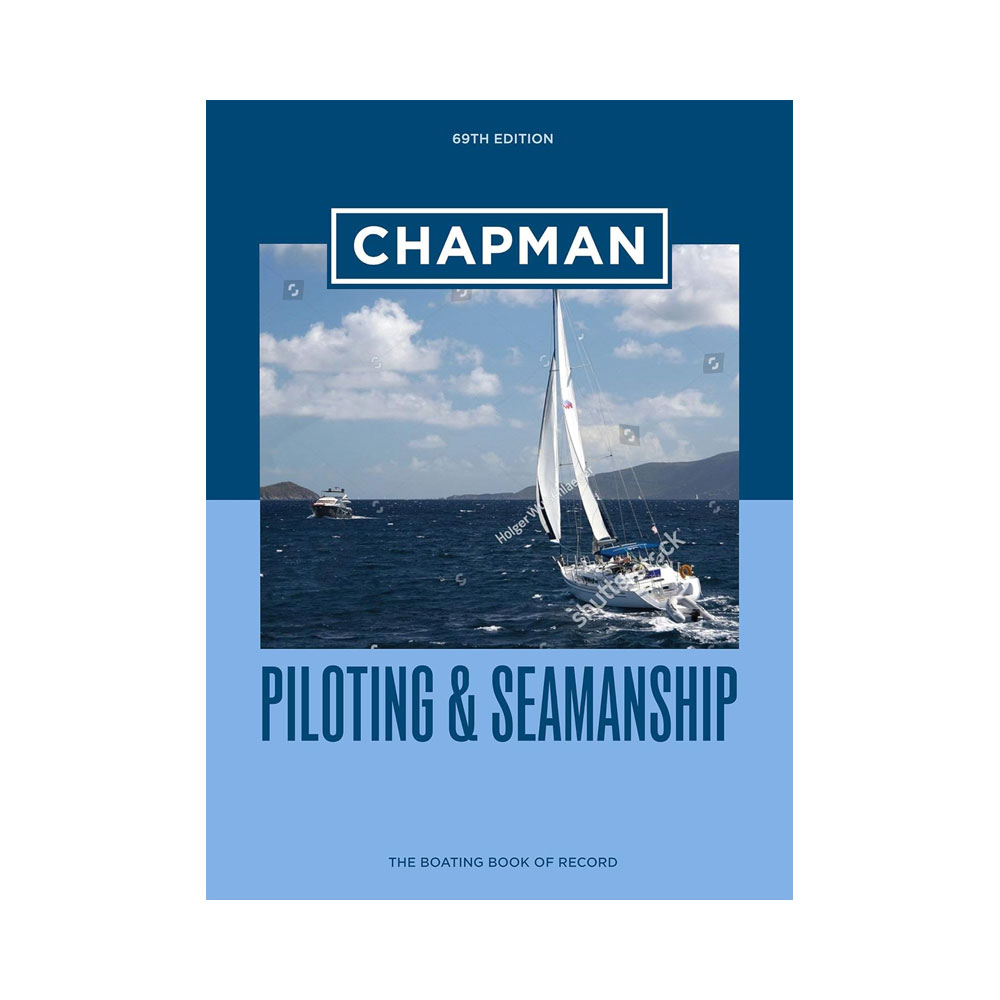
Chapman Piloting & Seamanship 69th Edition
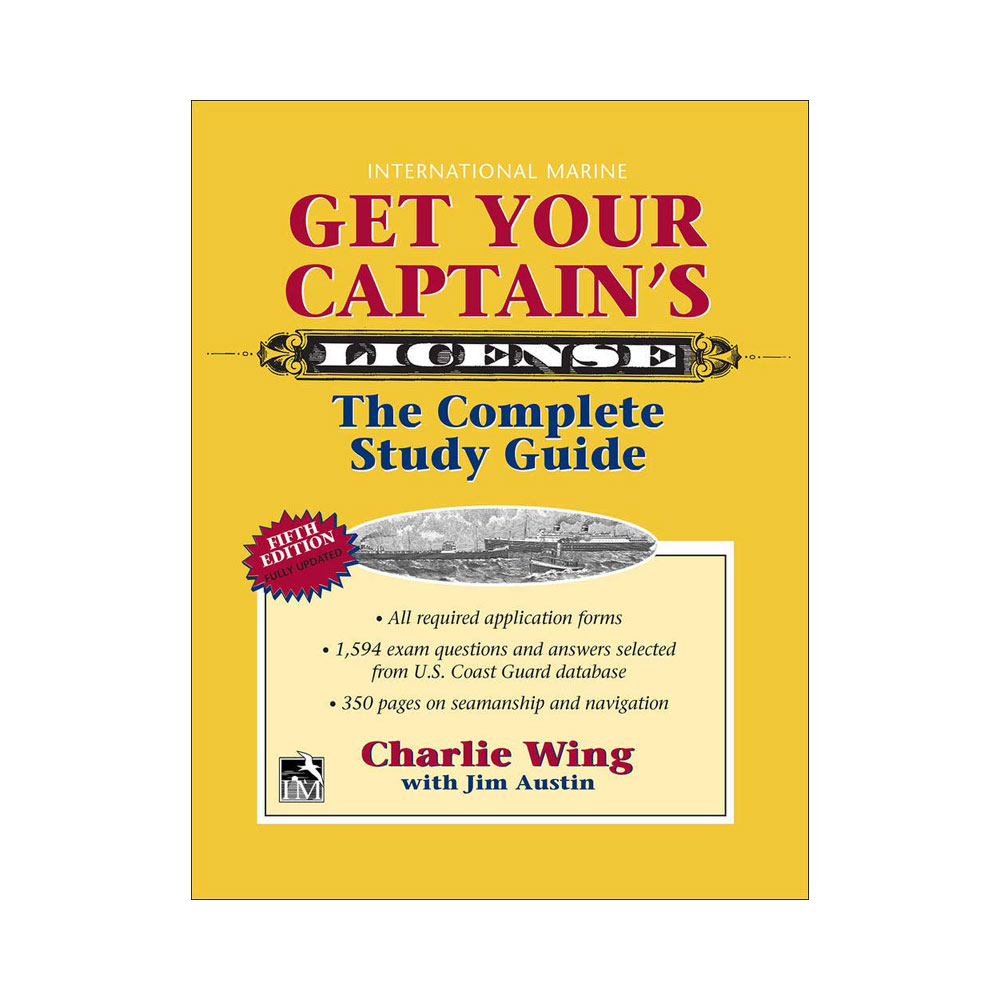
Get Your Captain’s License Study Guide
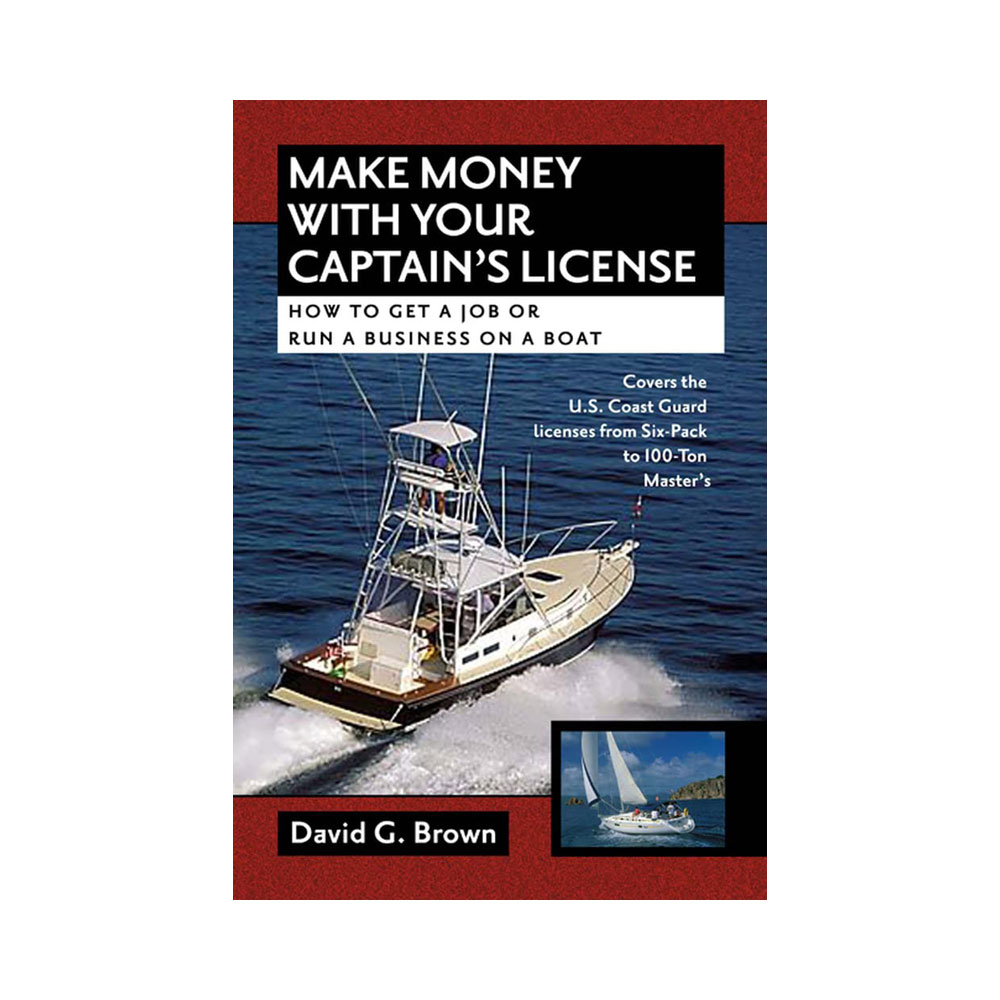
Make Money With Your Captain’s License Book
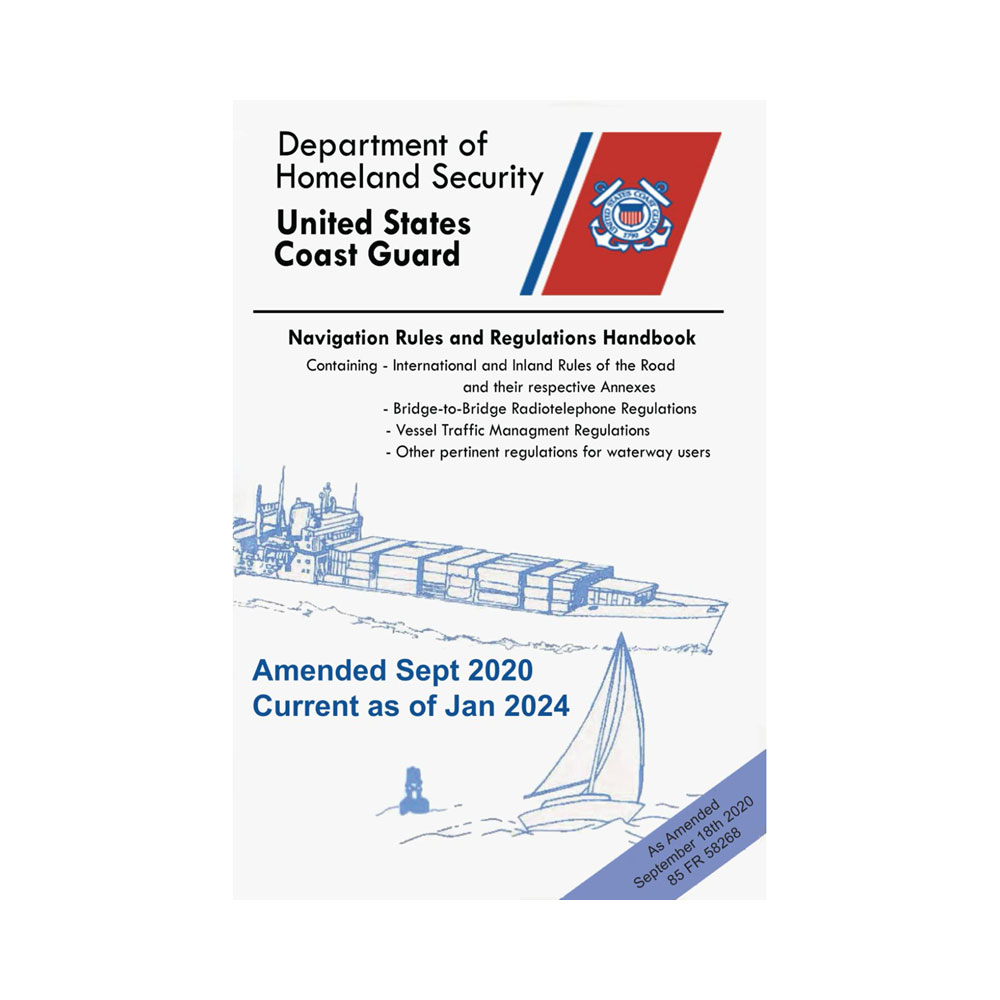
USCG Navigation Rules And Regulations Handbook
Love the boat life check out these picks for your boating lifestyle:.
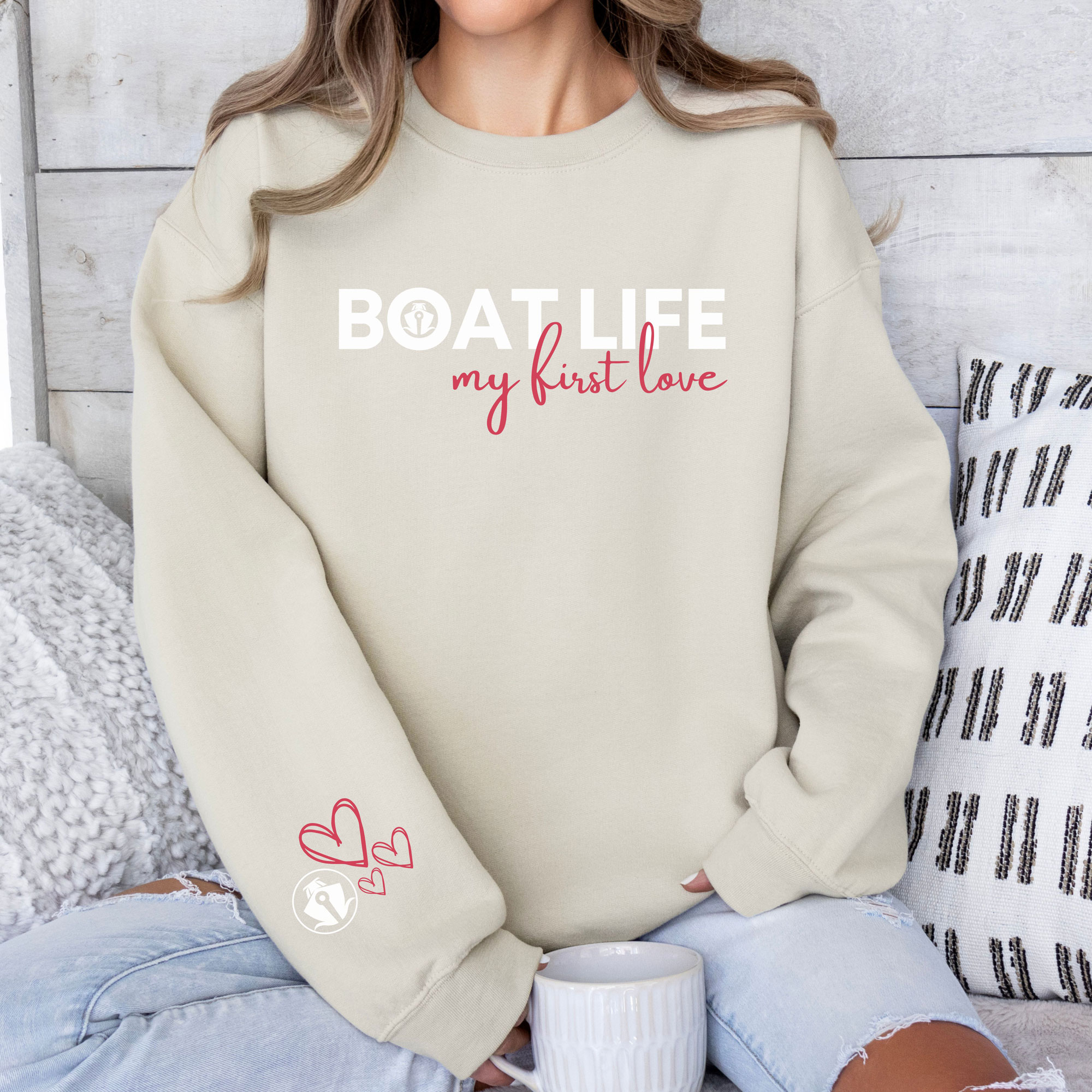
My First Love is Boat Life Sweatshirt
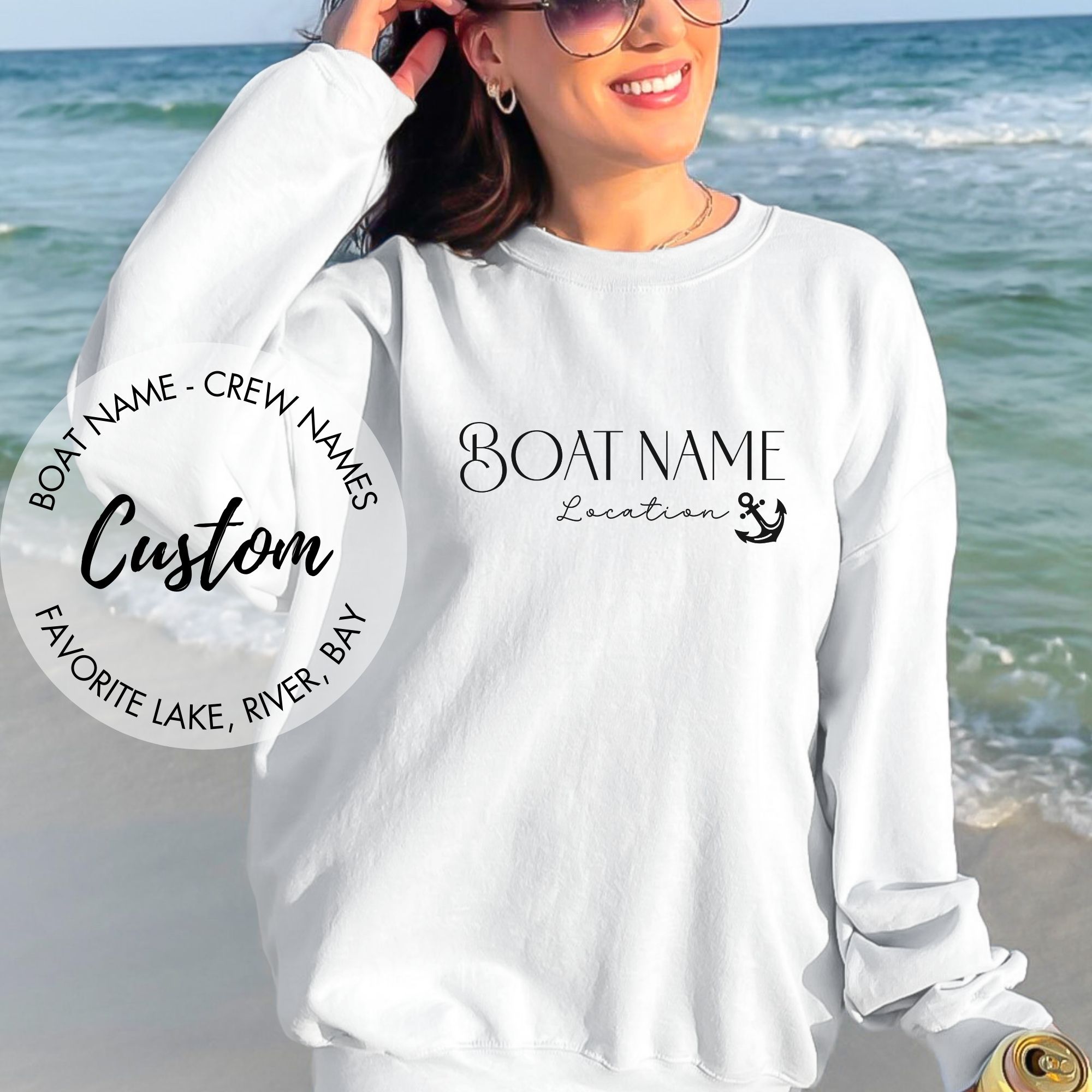
Custom Boat Name & Location Sweatshirt
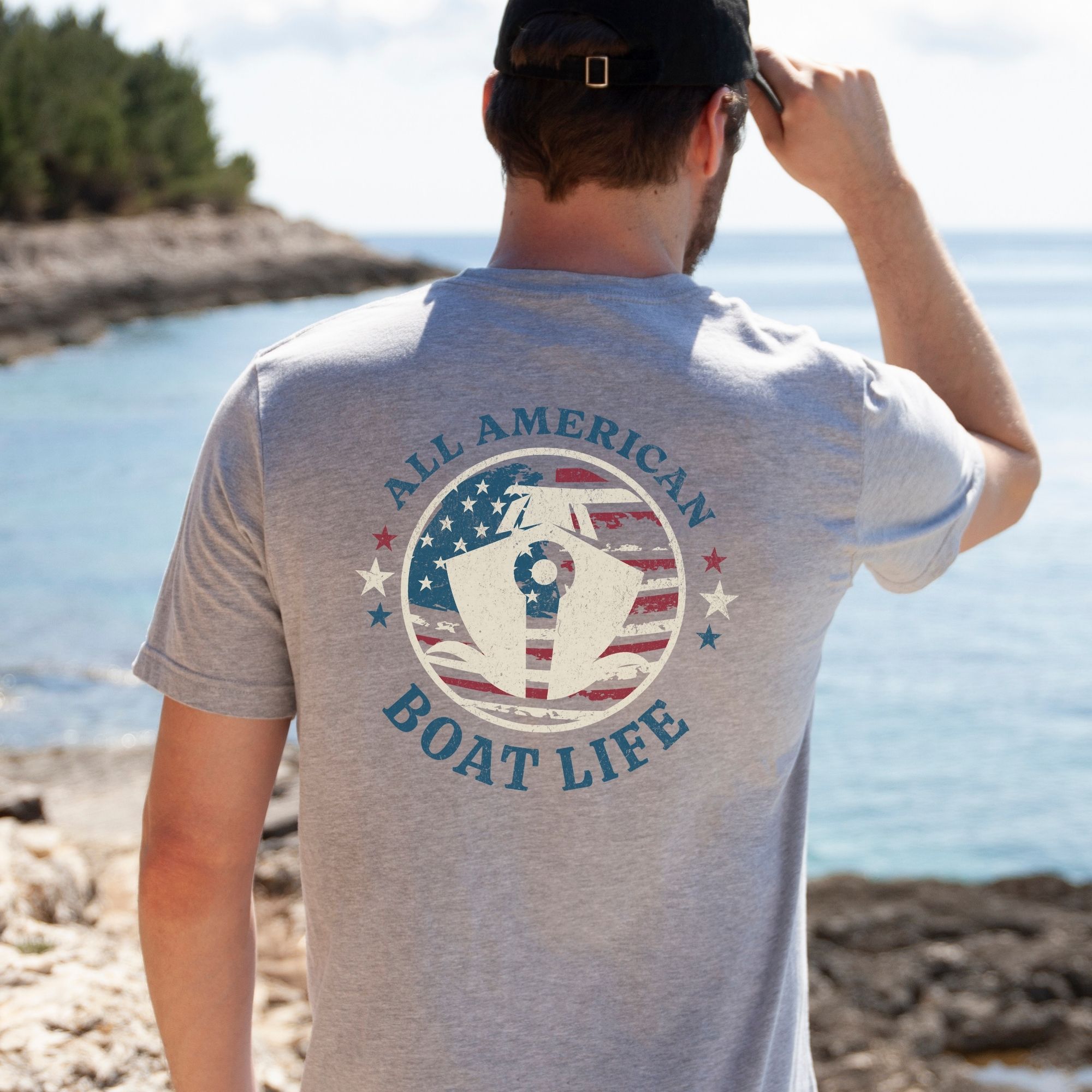
All American Boat Life T-Shirt
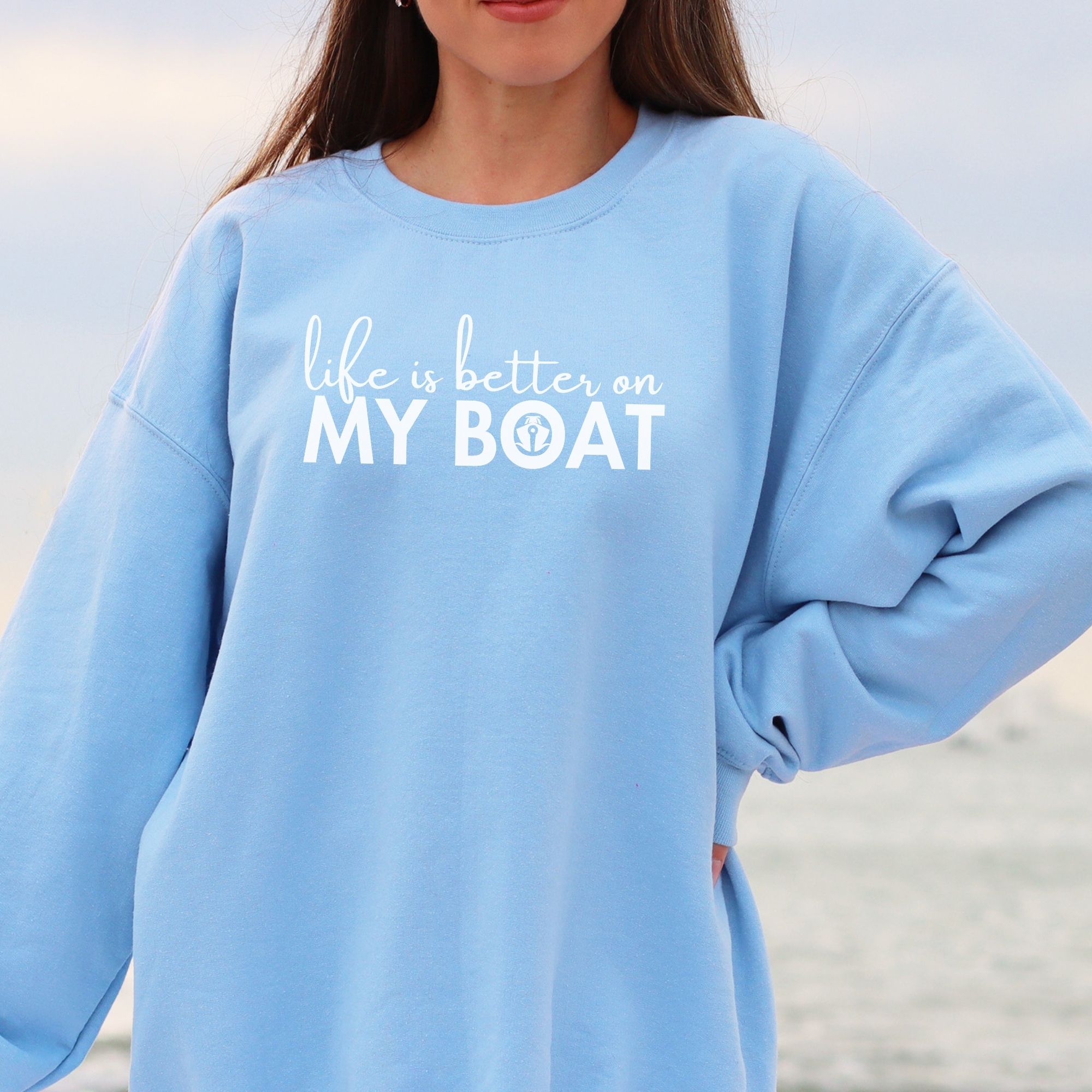
Life is Better on My Boat Sweatshirt


Capt. Rob Chichester
Related posts.
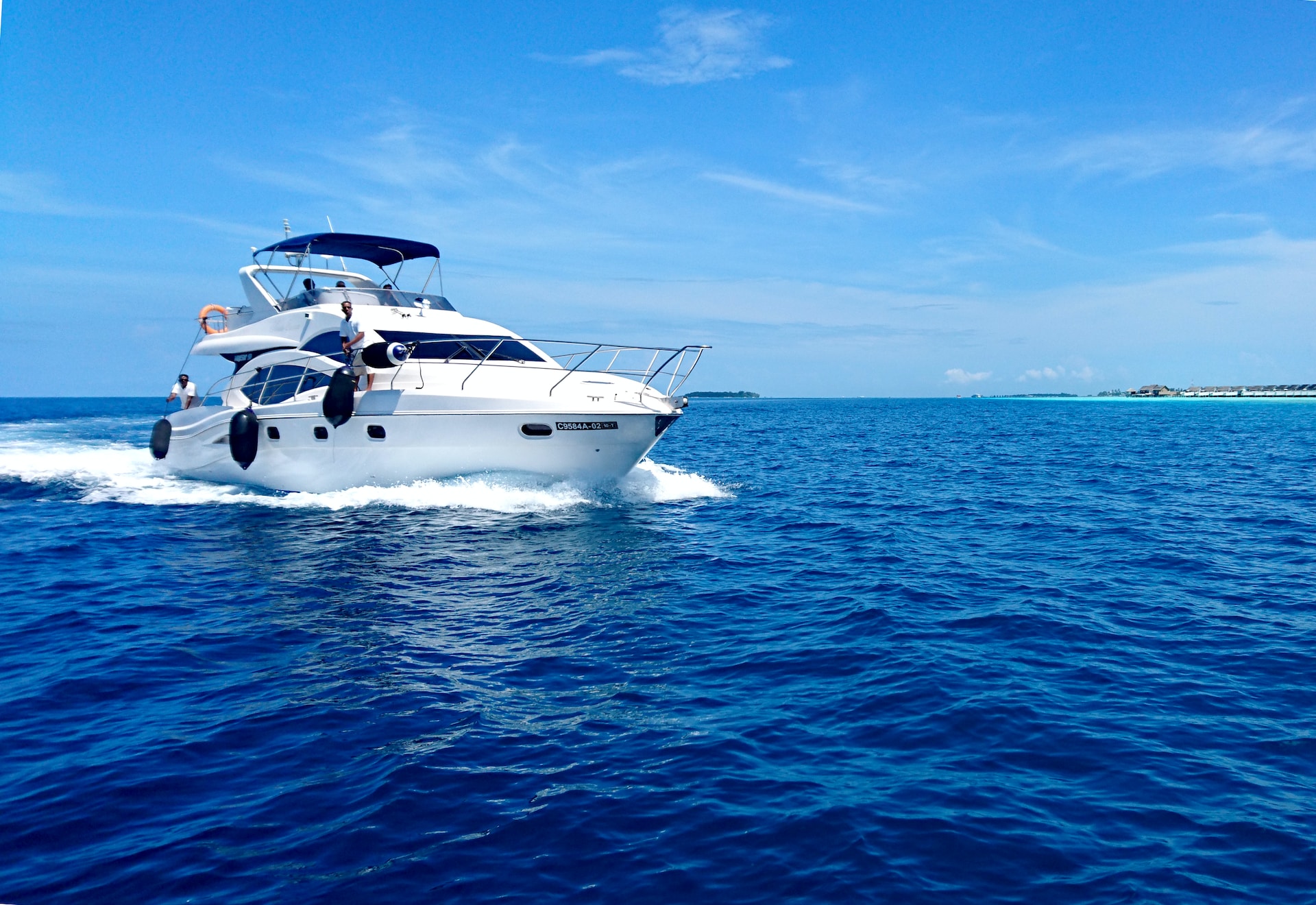
Can I Drive My Yacht Anywhere In The World?
May 11, 2023
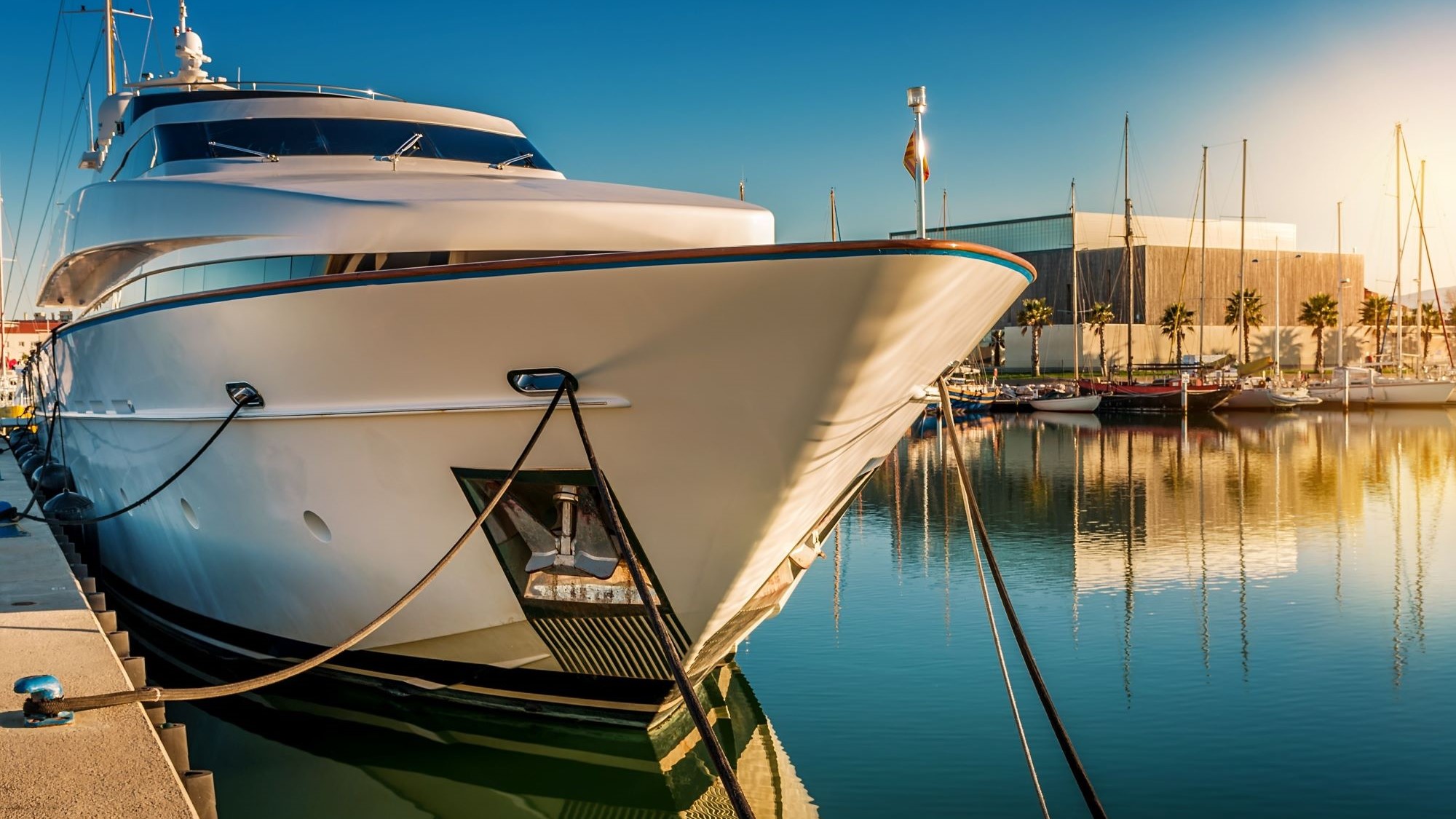
How To Transport A Yacht Safely
April 7, 2023
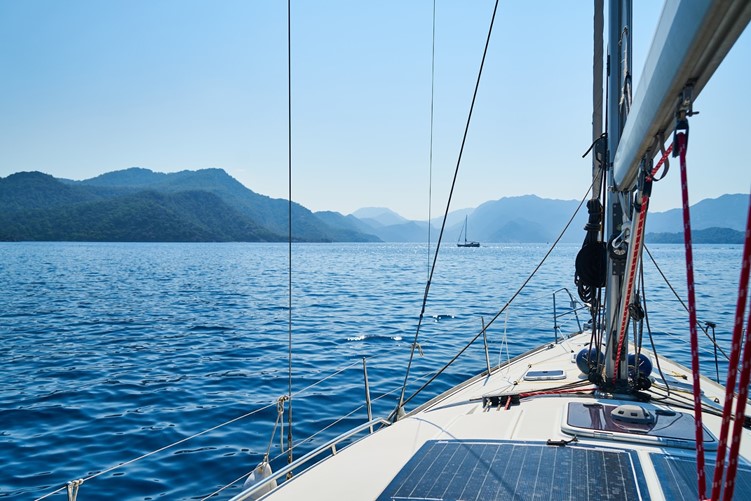
How Hiring a Captain Can Make You a Better Boater
May 29, 2021
24 Comments
Hi, I am hoping you can help me out. I am a USCG vet that was stationed at a small boat station in NJ from 1983-1989. I am trying to get my sea time documented but I am having a very hard time finding out how to do that since the station records were not computerized at that time. I have contacted the NMC and they told me to call the station to get an Abstract of Operations report. They just laughed at me when I called the station. I have requested info from vetrecs.archives.gov but I am sure that will take some time just to get an answer as to wether they can do that or not. I was wondering if you knew how to go about getting the information that I need. I am sure I am not the only person with this issue and I can’t seem to find anyone that knows exactly how to go about documenting that time.
Thanks Jeff

Thanks for your question. I don’t have a lot of advice for you regarding USCG internal procedures. Perhaps you can contact the Office of Personnel and try to get a copy of your service record. Alternatively, is there anyone at that small boat station who knew you? Would the OIC be willing to write a letter? The last and least likely option would be to fill out your own sea service form and see if anyone there would sign off on it for you. Now the regulations speak of a Certificate of Discharge being acceptable. See for example 46 CFR 10.232 ( https://www.law.cornell.edu/cfr/text/46/10.232 ). If you already have that, you might be good to go!
So…start with your Certificate of Discharge and if you don’t have that, then contact the Office of Personnel to see if you can get the requisite documents. Let me know how you make out!
Hi Captain Rob, My name is Elton the 66 year old owner of a small 35 ft. Kingscraft houseboat. I spend a lot of time on one large lake. It is an older wonderful all aluminum vessel but weighs only about 8000 lbs. In the chart the lowest weight rating is 17 tons. I would love to educate myself and become a Captain. Is that possible at some level? I would also have to document my own time as pilot.
Sir, you have open to you both options that I describe in my article. You could pursue either a Master’s license OR an Operator of an Uninspected Vessels license. From what you have written, I see no inherent obstacles. You must be able to document your seatime, get a medical evaluation, and pass the 4 or the 3 parts of the written exam depending on which license you choose to pursue. In any event, you would qualify for an Inland license. Your tonnage rating would also depend on which license you pursue. Solely based on what you have said above, you would qualify for a 50 ton Master’s license. If you pursue an OUPV, that comes with a tonnage rating of 100 tons. For most people, the biggest challenge is acceptably documenting seatime. (It needs all be as captain. You can include time served as master, mate, or crew but NOT as a paying passenger.) If your concern is your age, I know a few captain’s in the 60s and 70s. I am one of the former myself. Good luck!
Capt.Rob I am US Army Veteran And I was wondering if their was a school i could attend to obtain a licence, I ask this because i have to decide what i want to go to school for and this job would be a top pick for me. Any help on this matter would be greatly appreciated thanks
There are MANY captain schools that can help you with the written tests but there are NO schools that can help you with the sea time requirements unless you are considering enrolling in a maritime college like Kings Point or Fort Schuyler in the New York State university system. I used Mariners Learning System for my written tests only because it was more convenient than going to the USCG REC to take the exams.
Where would I get sea service forms . I have owned and operated my own boats for over 30 years and am now being asked to get a captains liscence
There is a link in the article for the National Maritime Center. All the forms you needs can be found on their website. Alternatively, you can search for USCG National Maritime Center with your favorite search engine.
Couple questions. Would working as a divemaster on a dive boat in the Gulf of Mexico count for near coastal sea time? And if you were to have 8 hours of sea time in one day, could you potentially count that as two days at sea? Or would it still be just one day? Thanks for all the info this has been a huge help!
Any time spent aboard a vessel underway counts as long as the owner, manager, or master of the vessel will attest to that. When submitting Sea Service forms, your option for your role aboard the vessel are things like crew, mate, master, engineer, etc. You will need to determine what your position was. Divemaster is not recognized and does not speak to maritime skills necessarily. (For example, you can dive from shore never having been in a boat.) Regarding the near coastal time, you just need to verify that the vessel upon which you served was indeed in near-coastal or ocean waters. The form has spaces for days spent within the specified boundaries and outside those boundaries. I once saw an interactive chart online for finding the boundary lines in a given area. For your purposes, you cannot count 8 hours as two days underway. You need a MINIMUM of 4 hours underway to count that day. Being at anchor or otherwise moored or secured does not count. Good luck!
Capt. Lots of good and helpful info. I boated the Chesapeake for 10+yrs, from the Delaware bay to Virginia in a 27′ cruiser. i’ve not been on the water since 2012. So to be clear, I need to acquire some time on a charter vessel to even attempt the basic “6-pack”. I have my CG boating skills and seamanship certificates,and will work on the CG719S. Living in Florida, lots of opportunity, should have done this sooner !! Thanks
Thank you for your feedback. I am glad you found the article helpful. Apart from documenting your sea time, I found the most labor intensive aspect was verifying that a) I had all the documents that I needed and b) I had correctly completely all of the USCG forms. A lesser challenge may be in determining what correct application fees are. If you are not sure, contact USCG NMC by phone, email, or online chat to get clarification on what fees you have to pay. Good luck!
This is great info..
I am starting out (hopefully) as a plan is due to new lifestyle i desire to get an two oceans open ocean 800 expedition catamaran (again very expensive so fingers crossed) but the plan is while the vessel is being built, i can take several classes and get a few certifications prior to launch, then as life you see everywhere on youtube for example have the vessel at dock, then day trips, then a week trip and just push it a little further until you are ready for the maiden voyage, really looking to live off anchorage in around the philippines / guam area mostly philippines or south pacific area, mostly friends and family but my question is any licence for that type of boat, and also if you have heard of any schools in the philippines? I know they have a few courses that are completely certified like any american school but a fraction of the cost, just curious if any particular licence i need to get or have?
You did not say whether you intended to take passengers for hire. Generally, one only needs to be licensed if you are getting paid to carry passengers OR if you working in more advanced maritime fields like tug boats and large cargo vessels. If you are only operating your private vessel for your own personal or recreational purposes, you usually do not need any kind of license other than possibly taking a multiple choice test on local safety rules and rules of the road. I am not familiar with the licensing requirements in foreign venues like the Philippines. Each nation has its own requirements. I was able to find information at this link: http://www.marina.gov.ph/policies/MCs/mc170.pdf . You may find some useful information in that document.
Good luck! And safe sailing…
Your information was helpful, thank you. I have decided to pursue getting my License but I am starting from scratch. Should I take classes before looking to get sea time? And how does one go about getting sea time with no experience?
Any course work you take will typically culminate in a certificate of completion. However that certificate will only be valid for 1 year. Therefore, do NOT take any exams more than about 6 months prior to submitting your original license application. As for sea time, you can look for marine work that does not require a license like deck crew on water taxis or excursion boats. Time spent on a friend’s boat counts. Have that friend complete and sign a sea service form. Sea time never expires and can be counted from the age of 15. Learn your rules of the road and learn to feel your vessel. Driving a boat is a lot different from driving a car. As a licensed captain, you are expected to step up to the helm and handle the ship with relatively little training time. Good luck!
Great article, thanks for writing it! Does time spent aboard a recreational boat that I own, when I am the only person aboard, count towards sea time? If so how do I document that – there’s no one to sign for the time. Thanks again.
Time spent on your own boat absolutely counts. You would sign the CG-719S Sea Service form yourself where it says Applicant AND where it says Person Attesting to Experience. However, you will have to provide proof of ownership for the vessel. The Bill of Sale is usually what is used but the vessel’s CG document or state registration card should also be sufficient. Remember that seatime is counted only from the age of 15 and it is underway time of at least 4 hours per day. Time on the anchor or alongside do NOT count. The presence of others is irrelevant.
Hi Shane. Sea time is defined as time working aboard in any capacity relevant to the rating you are pursuing. For instance, if you are a bos’n or deck crew, that time it unlikely to count towards a engineer’s license and conversely, time in the engine department or work on mechanical systems would be difficult to apply towards a deck officer’s license. The highest rating one can get on an original (i.e., first) license is 100 Ton Master. It is likely that your Navy time would count; however, your challenge is getting an appropriate service letter from the Navy. You cannot submit a CG-719S for your Navy service as that form is for SMALL VESSEL service. Consult the USCG site at http://www.uscg.mil/nmc for more information. Also note that you may use any valid sea time accrued from the age of 15. Good luck!
Hi Capt. Rob, I have one question rather just some clarification regarding the time at sea, for the tonnage rating. Does “time at sea” mean just that or does it mean operating the vessel. I was in the Navy for several years as an operations specialist and I am not sure what level I would qualify for if I were to pursue getting a Captains license. Also I was wondering how much the entire process would cost.
Hey Rob, Thanks so much for taking the time to write this, it was really very useful to read. This has been on my mind for some considerable time, but I am now finally starting on the road to getting my licence and taking a nautical shift in my career. I have been a sailor all my life, was sailing single handed as soon as I could walk and now own a 38 foot Irwin racer/crusier.
My one big question is online study vs going somewhere to do the required course? I wonder how you gained your licence and what you might recommend?
My issue was primarily NOT wanting to have to take the tests at the NYC REC and to NOT attend intense 8-10 hour weekend classes. I was comfortable with the Rules of the Road and chart navigation issues as well the Deck General material. Since I got a Master’s license (versus the OUPV), there was more legal stuff to know in the category they call Ship’s Business. I did an online course through Mariner’s School in Princeton, NJ. The price was good and the location was convenient for when I did go to take the test.
The bottom line is do what works best for you given what you need to learn or refresh, how much time you have to do it, and where you will need to go to take the final tests.
(Please note that you can submit your application and/or take your tests at ANY REC anywhere. It is not a function of where you live or where you will sail.)
Great article Rob. Thanks for sharing your experience
Thank you for the feedback. Do please let me know if you have any further questions or if I may be of service in some other regard!
Comments are closed.
Language selection
Wxt language switcher.
- Français fr
List of Certificates of Competency, Training Certificates and other Equivalencies accepted as Proof of Competency when Operating a Pleasure Craft
From: Transport Canada
Quick Links
- Safe Boating Guide - TP 511 E (PDF, 4.7 MB)
- Boating safety
- Pleasure Craft Licence
- Pleasure Craft Operator Competency
- Buying a Boat
- Visitor Information
- Boating Safety Contribution Program
Certificates of competency, training certificates and equivalencies directly pertaining to the operation of a vessel are recognized as proof of competency when operating a boat fitted with a motor that is used for recreational purposes. The current list contains over 90 such professional certificates, courses and equivalencies.
If you hold any certificate on this list, you just need to make sure you carry your certificate on board. You may carry the original documentation or a copy of the certificate.
List of Certificates of Competency, Training Certificates and other Equivalencies accepted as Proof of Competency
Under the Marine Certification Regulations (26)
Under the Marine Personnel Regulations (49)
Under the Masters and Mates Examination Regulations (17)
Training Certificates (5)
Other Equivalencies (4)
Canadian Coast Guard endorsements, certificates and training courses (8)
Department of National Defence Certificates and Training Courses (8)
Under the Marine Certification Regulations :
- Master Mariner
- Master Intermediate Voyage
- Master Local Voyage
- First Mate Intermediate Voyage
- First Mate, Local Voyage
- Watchkeeping Mate, ship
- Restricted Watchkeeping Mate, ship
- Watchkeeping Mate, MODU /Surface
- Watchkeeping Mate, MODU /Self-elevating
- Watchkeeping Mate, MODU /Inland
- Master, Ship of not more than 350 tons, gross tonnage, or tug, local voyage
- Master, Limited
- First Mate, Limited
- Fishing Master, First Class
- Fishing Master, Second class
- Fishing Master, Third Class
- Fishing Master, Fourth Class
- Certificate of service as master of a ship of not more than 1600 tons, gross tonnage
- Certificate of service as master of a fishing vessel of not more than 100 tons, gross tonnage
- Bridge Watchman
- Proficiency in Fast Rescue Boats
- Master, limited for a pleasure yacht of more than 20 m in length
- Master, limited for a short run ferry
- Master, limited for an intermediate run, ferry
- First Mate, limited for a short run ferry
- First Mate, limited for an intermediate run ferry
Under the Marine Personnel Regulations :
- Master, Near Coastal
- Master 3000 Gross Tonnage, Near Coastal
- Master 500 Gross Tonnage, Near Coastal
- Master 3000 Gross Tonnage, Domestic
- Master 500 Gross Tonnage, Domestic
- Master 150 Gross Tonnage, Domestic
- Master, Inland Waters
- Master, Ship of not more than 350 tons, gross tonnage, or tug, home trade voyage
- Master, Ship of not more than 350 tons, gross tonnage, or tug, inland waters voyage
- Certificate of Service as Master of a Steamship of not more than 350 tons, gross tonnage
- Master, Long Run Ferry
- Master, Intermediate Run Ferry
- Master, Short Run Ferry
- First Mate, Inland Waters
- First Mate, Long Run Ferry
- First Mate, Intermediate Run Ferry
- First Mate, Short Run Ferry
- Master, Limited for a Vessel of 60 Gross Tonnage or More
- Master, Limited for a Vessel of less than 60 Gross Tonnage
- Master 3000 Gross Tonnage, Domestic limited to a near coastal voyage, Class 2 if the voyage is a "minor Waters Voyage" as defined in the Canada Shipping Act, in the version that was in force immediately before coming into force of the Act
- Chief Mate, Near Coastal
- Watchkeeping Mate
- Watchkeeping Mate, Near Coastal
- Chief Mate 500 Gross Tonnage, Domestic
- Chief Mate 150 Gross Tonnage, Domestic
- Chief Mate, Limited for a Vessel of 60 Gross Tonnage or More
- Chief Mate, Limited for a Vessel of less than 60 Gross Tonnage
- Second mate, Inland Waters
- Fishing Master, Second Class
- Certificate of Service as Master of a Fishing Vessel of less than 60 gross Tonnage
- Certificate of Service as Watchkeeping Mate of a Fishing Vessel of less than 100 Gross Tonnage
- Fishing Master
- Fishing Master, Restricted
- Fishing Mate
- Watchkeeping mate, Fishing
- Proficiency in Fast Rescue Boat
- Bridge Watch Rating
- Offshore Installation Manager, MOU /surface
- Offshore Installation Manager, MOU /self-elevating
- Barge Supervisor, MOU /surface
- Barge Supervisor, MOU /self-elevating
- Watchkeeping officer of a fishing vessel of not more than 150 gross tonnage and less than 24 metres in overall length
- Watchkeeping Mate of a fishing vessel of less than 24 m in length overall
- Certificate of service as Watchkeeping Mate of a fishing vessel of less than 24 metres in length
Under the Masters and Mates Examination Regulations:
- Master, Foreign-going
- Master, Foreign-going Certificate of Service
- Master Home Trade, First Mate Foreign-going
- Master, Home Trade
- Master, ship not more than 350 tons, gross tonnage, or tug, home trade or inland waters
- Master, ship of not more than 350 tons, gross tonnage, or tug, home trade voyage
- First Mate, Foreign-going
- First Mate Home Trade, Second Mate Foreign-going
- First Mate, Home Trade
- Second Mate, Foreign-going
- Second Mate, Home Trade
- Master, ship of not more than 350 tons, gross tonnage, or tug, inland waters voyage
- Certificate of Service as Master of a steamship not more than 350 tons, gross tonnage
- Second Mate, Inland Waters
- Master, Minor Waters
Training Certificates:
- Basic Safety and Operator Proficiency for Small Non-Pleasure Craft in Sheltered Waters (MED A4) issued under the Marine Certification Regulations
- Small Vessel Operator Proficiency ( SVOP ) training certificate issued under the Marine Personnel Regulations or a SVOP card issued by Transport Canada
- International Certificate of Competency issued by International Yacht Training Worldwide
- Day Skipper Sail and Day Skipper Power training certificates issued by International Sail and Power Academy Inc.
- Basic Powerboat and Basic Cruising training certificates issued by Sail Canada
- Basic Outboard Standard training certificate issued by Sail Canada
Other Equivalencies:
- Proof of at least seven fishing seasons, with no two of those seasons occurring in the same year, as master of a fishing vessel of up to 15 gross tonnage or not more than 12 m in overall length, acquired before July 1, 2007 in the form of a signed declaration or a Transport Canada card that is issued for the signed declaration (Subsection 212 (8) of the Marine Personnel Regulations )
- Small Vessel Operator – Commercial/Fishing Vessels issued by the Fisheries and Marine Institute of Memorial University of Newfoundland
- Basic Safety For Fish Harvesters (5 Days) issued by the Professional Fish Harvesters Certification Board of Newfoundland and Labrador
- Proof of at least seven fishing seasons, with no two of those seasons occurring in the same year, as officer in charge of deck watch of a fishing vessel of up to 15 gross tonnage or not more than 12 m in overall length, acquired before July 1, 2007 in the form of a signed declaration or a Transport Canada card that is issued for the signed declaration. (Subsection 212 (8) of the Marine Personnel Regulations)
Canadian Coast Guard endorsements, certificates and training courses:
- Coast Guard Watchkeeping endorsement or Coast Guard Watchkeeping Certificate
- Coast Guard Command endorsement or Coast Guard Command Certificate
- Coast Guard Small Vessel Command endorsement or Coast Guard Small Vessel Command Course Certificate
- Fast Rescue Craft Course
- Rigid Hull Inflatable Operator Training
- Small Craft Operator - Advanced / RHIOT
- Small Craft Training
- Small Craft Operator – Basic
Department of National Defence Certificates and Training Courses:
- Upper Deck Watchkeeping
- Destroyer Navigating Officer
- Surface Ship Command
- Patrol Vessel Command
- Bridge Watchkeeping
- Deep Draught Officer or Fleet Navigating Officer
- Minor War vessel or Surface Ship Command (after 1997)
- Royal Canadian Navy Boat Coxswain Course
Report a problem with this page
Essential Guides
Ocean Mapping
New to Yachting
Yacht Captain jobs
Your new adventure awaits.

Photo of Captain Sally-Ann Konigkramer
Explore more yacht roles
Other essential guides.

Mandatory certificates

What you need to know about B1/B2 visa

Download yacht crew CV templates

How to write a memorable yachting CV

How to prepare for a yacht interview?

What are the two main yachting seasons?

Big yacht crew hubs you should know about

Is yachting the right choice for me?

Yacht crew salary guide
Leading from the helm as a Captain is undoubtedly one of the most fulfilling and rewarding career paths in the superyacht industry.
The Captain holds the most senior position onboard a yacht and the one responsible for the overall operation of the yacht, the safety of its crew, owners and guests. It’s an all-encompassing position where excellent navigational capabilities are coupled with a high level of administrative and managerial skills.
The role differs depending on the size of the yacht, its usage and its cruising itinerary. Captains on smaller yachts need to be hands-on problem solvers and multitaskers. Under 35m, for example, the Captain’s position also encompasses the role of an Engineer, whilst on larger yachts the Captain has dedicated teams and Heads of Departments under their command.
What does a yacht Captain do? | Yacht Captain Job Description
Commanding the yacht and navigating safe passages across the oceans is just a small part of a Captain’s job. A yacht Captain is also in control of overall safety, crew management, budgeting, administration, refit projects, voyage planning and adhering to all international maritime regulations (ISM, MARPOL, SOLAS).
The responsibilities of a yacht Captain include:
Safe navigation and operation of the yacht
Ensuring that the yacht is in all respects compliant with the relevant laws and regulations
Ensuring that the yacht is prepared for annual flag surveys, annual class surveys and port/flag state controls
The setting of budgets and budget management
Hiring, leading, appraising and dismissal of crew
Overseeing the maintenance of the vessel
Ensuring legal and regulatory compliance
Managing yacht refits and surveys
Managing fuel costs and dockage fees
Being an ambassador for the yacht, hosting and entertaining guests as required
Voyage planning
Soft and hard skills required to be a yacht Captain
Successful Captains are excellent leaders, able to set a common goal for their crew and able to communicate with owners, guests, crew, contractors and brokers alike.
The skills of a successful yacht Captain include:
Excellent leadership, management and diplomacy skills
Excellent yacht handling and navigation
Ability to stay calm in difficult situations
Good grasp of finance and legislation
Excellent communication and interpersonal skills
Organisation and administration skills
How to become a yacht Captain?
Maritime training and sea-going experience is required. Positions are qualification based, from a Master 200, Master 500, Master 3000 and up to a Captain Unlimited. Training may be completed in a National Maritime Academy, a university or a specialised Sailing School.
Mandatory certificates needed to work on board a yacht
All crew members regardless of position and seniority need to have a valid STCW Basic Safety Training certificate, along with a recognised Seafarers medical certificate, the most popular being the ENG1 which is issued by an MCA (Maritime and Coastguard Agency) professional medic.
Without these two certificates, it is not possible for crew to work on board a yacht and a Recruiter will not be able to assist you in finding work onboard a yacht. For more information about mandatory certificates please visit our Mandatory Certificates Guide .
Are you ready to secure a Captain position on board a yacht?
Become a member of YPI CREW and connect with our recruiters so they can guide you through your job search.
Each of our recruiters is specialised in crew placement for a particular department and they will do their best to get you an interview on board a yacht. They will also advise you on how to best present your experience and skills and prepare for a yacht job interview.
YPI CREW TEAM
Ypi crew recruiters in charge of captain recruitment.

Ulrica Lindström
Head of Captain and Officer Department

Captain and Officer Recruitment Specialist

Caitlin Sorrell
Let’s get started. call us on +33 (0)4 92 90 46 10 or email us., our mission, vision and values, mlc 2006 compliance, essential guides, yacht crew positions.
Chief Officer
Second Officer
Third Officer
Chief Engineer
Interior Crew
Head of Service
Head of Housekeeping
Specialist Positions
Spa Manager
Spa Therapist
Personal Trainer & Yoga Instructor
Hairdresser
Mandatory Certificates
B1/b2 visa information, how to write a memorable cv, how to prepare for an interview, yachting seasons, yacht crew salary guide, is yachting the right choice for me, cv templates, ocean mapping, new to yachting.
+33 (0)4 92 90 46 10
- +1 855-373-0700
- [email protected]
Professional Yacht Delivery By A Licensed Master Captain
How to become a boat captain for hire.
Whether you want to own a boat charter, work on a boat charter, or want to be employed by a boating company or a state/federal agency, you will need a captain’s license.
Though not a requirement for recreational boaters, having a captain’s license is a great way to boost your resume and show others that you possess expert-level knowledge of maritime rules and regulations. The license only becomes necessary if you get hired to navigate an auxiliary powered boat in USCG-patrolled waters.
The USCG will issue the license after a training session and examination. Throughout the course, participants will learn about ocean and water navigation, maritime rules, weather patterns, chart plotting, and boating safety regulations.
There are different types of tests for different proficiency levels and overall goals. As for the courses, they consist of classroom learning and examinations, with durations ranging from eight days to two and a half weeks. The price depends on the type of course and ranges from a couple hundred dollars to more than a thousand.
All USCG-issued licenses must be renewed every five years. Though you don’t have to pass a renewal exam, you will be required to pass a physical examination and an approved drug test.
Step 1: Complete the Requirements
There are requirements that need to be completed before you can proceed with earning a captain’s license. These include the following:
- 360 days on the water, at four hours each day, documented within the last five years
- Pass a drug test
- Pass a physical examination
- Present three character references
- Possess CPR/First Aid certifications
- Pass a background test, with fingerprinting
Step 2: Look for a Certified Course Provider
Once the requirements above have been met, find the nearest USCG-approved training center. You can obtain an updated list of course providers from the USCG Maritime Center. Moreover, you can find relevant forms on the main USCG website.
Step 3: Complete the Follow-Up Requirements
Once you’ve completed the course, you have 365 days to submit the following materials to the USCG for processing: application form, drug and physical test results, sea time log, first aid and CPR certifications, insurance fees, letters of references, finger printing cards, and proof of citizenship (passport or birth certificate).
How Trusted Yacht Delivery Helps Boat Charter Captains
Being a boat charter captain is a challenging but rewarding profession. According to a 2015 study from the Bureau of Labor Statistics, the wages of captains, mates and pilots of water vessels ranged from $39,100 to $102,870 a year. In comparison, the average hourly wage and the average annual wage in 2015 was $39.98 and $83,150, respectively. But beyond the money, a career as a boat captain has other perks. For example, being a boat captain means that you will get to enjoy flexible schedules and exciting opportunities for work.
Trusted Yacht Delivery is always on the lookout for seasoned boat charter captains to help operate the vessels in our ride sharing database. When working with us, you get to do what you love and share the excitement with less experienced boaters. Read more about boat charter captains working with Trusted Yacht Delivery.
Share this Article
I'm Captain Dave Subers. Call me personally (855-373-0700) and I'll be happy to to answer any questions you may have about boat deliveries.
Call 855-373-0700 today for a Fast and Free Quote or click the button below
Select boat delivery projects over the past year..., 41 hunter dsc gulfport, ms to kemah, tx, 48' absolute navetta las olas, fl to orange beach, al, 43' cruisers danvers, ma to baltimore, md, 63' hatteras fort lauderdale, fl to stuart, fl, 54' savannah stuart, fl - new capt training, 63' bertram npb, fl to eleuthera, bahamas, 75' hatteras jupiter, fl to west palm beach, fl, 52' viking nassau, bahamas to west palm beach, fl, 53' tiara coupe hobe sound, fl to westbrook, ct, 46' azimut boca raton, fl to tampa, fl, 45 lagoon fort lauderdale, fl to key west, fl, 48' searay flybridge stuart, fl to west end, bahamas, 50' lagoon power cat stuart, fl - new capt training, 42' boston whaler miami, fl to port everglades, fl, 43' galeon htc st petersburg, fl to pensacola, fl, 38' gulfstar trawler knoxville, tn to stuart, fl, 3650 cruisers washington, dc to daytona beach, fl, 44' regal jupiter, fl to jacksonville, fl, 51' searay fort lauderdale, fl to freeport, bahamas, 35' beneteau swift trawler miami, fl to new orleans, la, 63' dufour miami, fl to annapolis, md, 50' carver my baltimore, md to hilton head, sc, 63' viking my miami, fl to daytona beach, fl, 46' beneteau fort pierce, fl to key west, fl, 64' absolute navetta miami, fl to bimini bahamas + local training, 38' tiara stuart, fl to fort myers, fl, 43' mainship sedan fort myers, fl to daytona beach, fl, 64' offshore yacht charleston, sc to boca raton, fl, 50' galeon fly sarasota, fl to watts bar, tn, 42' regal fly fort myers, fl to jupiter, fl, 60' viking my punta gorda, fl to melbourne, fl, 65' grand alaskan annapolis, md to naples, fl, 48' searay fly boca raton to cape coral, fl, 60' sunreef wpb to nyc, 35' meridian palatka, fl to sarasota, fl, 44' defever local new owner training, 35' monteray local yard delivery, 36' monk port charlotte, fl to port labelle, fl, 47' grand banks tampa, fl to myrtle beach, sc, 46' sessa survey, 42' jefferson local yard delivery, 35' tiara port charlotte to miami, fl, 47' sabreline greenwich, ct to jacksonville, fl, 48' lagoon british virgin islands (bvi), 59' marquis south florida/bahamas, 63' grand alaskan ft. pierce, fl to punta gorda, fl, 48' searay miami, fl to norseman yard, 55 hatteras stanford, ct to jacksonville, fl, 68 hatteras cockpit my key west, fl to west palm beach, fl, 42 regal pompano beach, fl to jacksonville, fl.
EXPERIENCED | DEPENDABLE | RESOURCEFUL
4726 SE Capstan Ave Suite 5C, Stuart, FL 34997
Trusted Yacht Delivery is a captain delivery and charter service for yacht deliveries, vessel relocations and charter captain services.
We have a select group of experienced master captains and crew available to accommodate your schedule and to provide an efficient delivery or charter captain based on the logistics of the trip.
We will pair the best captain and crew for your delivery or charter based on your needs so you have the best people for the job based on location, age of your boat, guest needs, etc.
Call us today at 855-373-0700 for a free quote, or complete our boat delivery quote form .
Copyright 2022 | Trusted Yacht Delivery | 855-373-0700 | All Rights Reserved
Yacht Delivery Quote
Owner/agent information, trip information, vessel information, confirmation, tracking login.
Automated page speed optimizations for fast site performance

Create a free profile to get unlimited access to exclusive videos, sweepstakes, and more!
One Crew Member Was Fired and Another Left During an Explosive Below Deck: "Not Acceptable”
Find out which crew members left St. David on Below Deck Season 11, Episode 7.
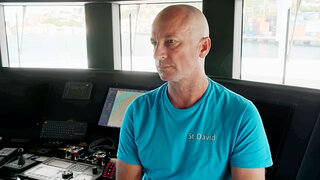
After several weeks of less-than-smooth sailing with the St. David crew, Captain Kerry Titheradge completed his first official Below Deck firing on Season 11, Episode 7 (which aired on March 18).
How to Watch
Watch Below Deck on Bravo Mondays at 9/8c and next day on Peacock . Catch up on the Bravo App .
The Aussie captain, who joined the series for Season 11 after appearing on Below Deck Adventure , let (SPOILER) Jared Woodin go following a series of mistakes as well a conflict with deckhand Kyle Stillie .
Jared wasn't the only yachtie who left the boat, however. Stew Cat Baugh decided to leave the vessel voluntarily after getting a serious phone call from a friend.
More from Bravo:
Below Deck's Jared Woodin Shares Why He Hasn't Met His Daughter Yet
Barbie Pascual Reveals the Surprising Reason She Isn't Divorced and "Legally Married" to Her Ex
See Who Captain Kerry Titheradge Is Confronting in the Middle of the Night: "This Is Unacceptable"
Who did Jared Woodin get fired on Below Deck Season 11, Episode 7?
As soon as Season 11 began, Captain Kerry recognized that Jared wasn't cut out to be the Bosun of a mega yacht. After giving Jared a few charters to see if he could improve during dockings and with his communication, Kerry decided to fire the Connecticut native.
Captain Kerry told Jared, "The way that you're treating these guys is not acceptable, and we've had discussions, and I've tried to guide you, I've shown you compassion. But, you've got sh-t going on, mate. You're your own worst enemy right now. You need to depart the vessel."
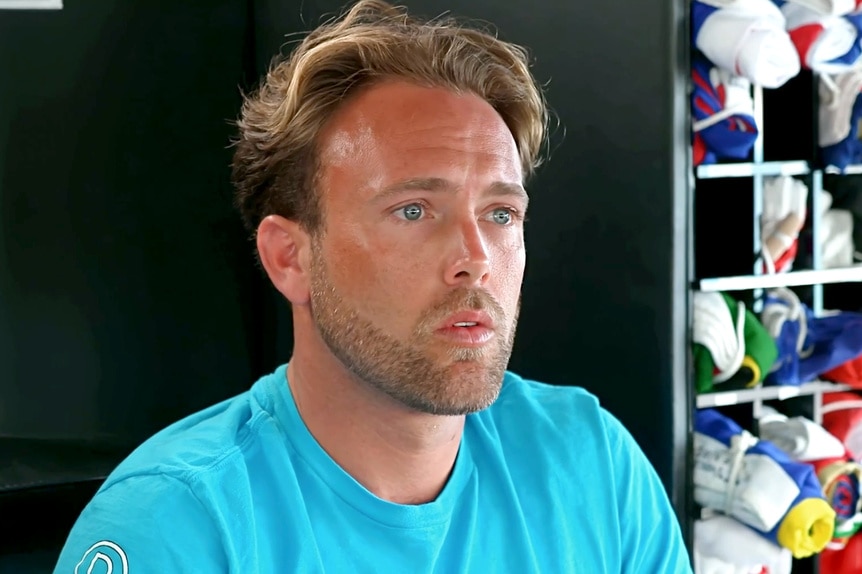
How Jared Woodin Reacted to Getting Fired
Once Kerry fired Jared, the dad of one seemed surprised. "I'm getting the boot?" Jared asked, and Kerry confirmed that was the case. "Really?"
Kerry noted that Jared did "have a lot going for [him]," but that St. David wasn't the right place for him.
"Take this time and work on yourself," Kerry said. "Me keeping you here is a disservice to you."
Jared ultimately agreed with that assessment in an interview on the episode.
"I thought I was in a good headspace coming in to this, [but] I'm really not. And, as much as I would like to be, I'm just lying to myself," he said. "Although the situation sucks, I actually really do feel a little bit lighter."
Watch Captain Kerry Titheradge's Girlfriend Make Her Below Deck Debut
Why did cat baugh leave on below deck season 11.
Jared wasn't the only crew member who left St. David on Season 11, Episode 7. After expressing how it was hard for her to find her place amongst the rest of the yachties, stew Cat Baugh received a troubling phone call from a friend named Megan when she was in her cabin.
"I'm sorry, I know you can't talk, but she's not answering, and no one else is awake right now," Cat's friend said on the phone. "Do you have, like, a couple seconds? I'm freaking the f-ck out."
Cat didn't reveal what exactly the phone call was about, but she recognized that she needed to get back home.
"So, I got a call from my friend, Megan," Cat explained in an interview on the episode. "This is a situation I really can't talk about, but my friends are my family, so it feels really sh-tty not being able to be there for her."
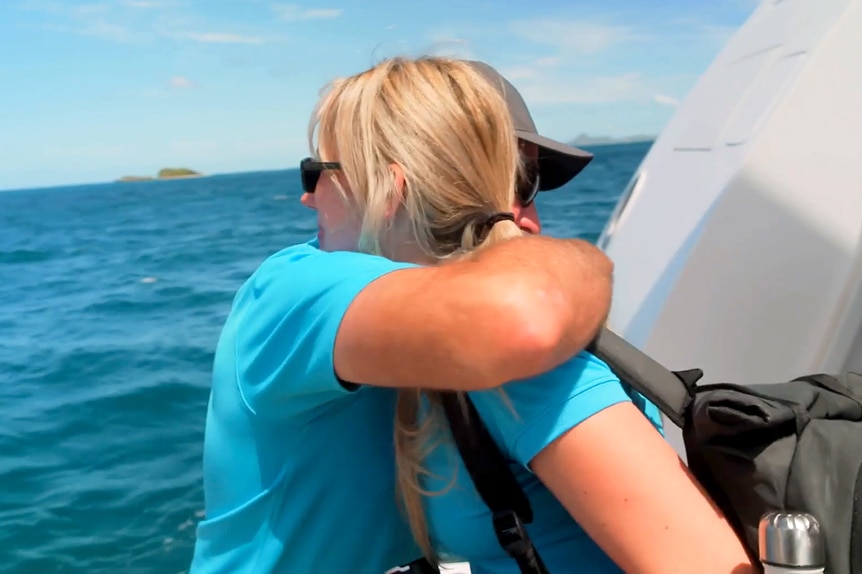
After the charter guests arrived, Cat talked to her boss, Fraser Olender , about what she was feeling. He encouraged her to put her mental health first. Kerry did the same.
"My number one job is to take care of my crew and their health," Kerry said. "I'm well aware of mental health. She's got to go, now."
11 Things You Didn’t Know About Below Deck's Captain Kerry Titheradge
"I wish I could have stayed. But, the thing is, there's no way I could have," Cat concluded. "This is too much. I need to be with the people [who] need me, and also, on this boat, I'm at a breaking point. I need to protect my mental health. It's like my support system is at home, not here."
Watch new episodes of Below Deck on Mondays at 9/8c on Bravo. Stream episodes the next day on Peacock .
- Ben Willoughby
- Jared Woodin
- Kerry Titheradge
Related Stories
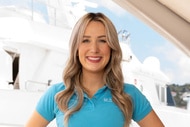
Why Cat Baugh Left Below Deck Season 11

Ben Opens Up About His Boatmances with Sunny and Camille
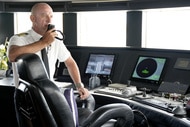
Captain Kerry Just Promoted This Crew Member to Bosun

Who Captain Kerry Is Confronting in the Middle of the Night

Barbie Opens Up About Her Relationship with Her Ex-Husband
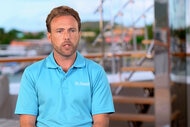
Jared Woodin Reveals Why He Hasn't Met His Daughter

Watch Captain Kerry's Girlfriend Make Her Below Deck Debut

Captain Kerry Gushes About His Two Kids
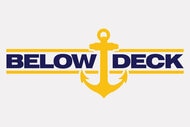
Below Deck Season 11 Trailer Introduces a New Captain: Watch
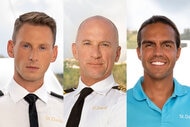
All About Grenada: Details on Below Deck Season 11 Location
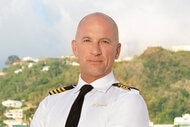
Captain Kerry Opens Up About His Girlfriend

Ben Reveals Why Him and Camille Really Broke Up
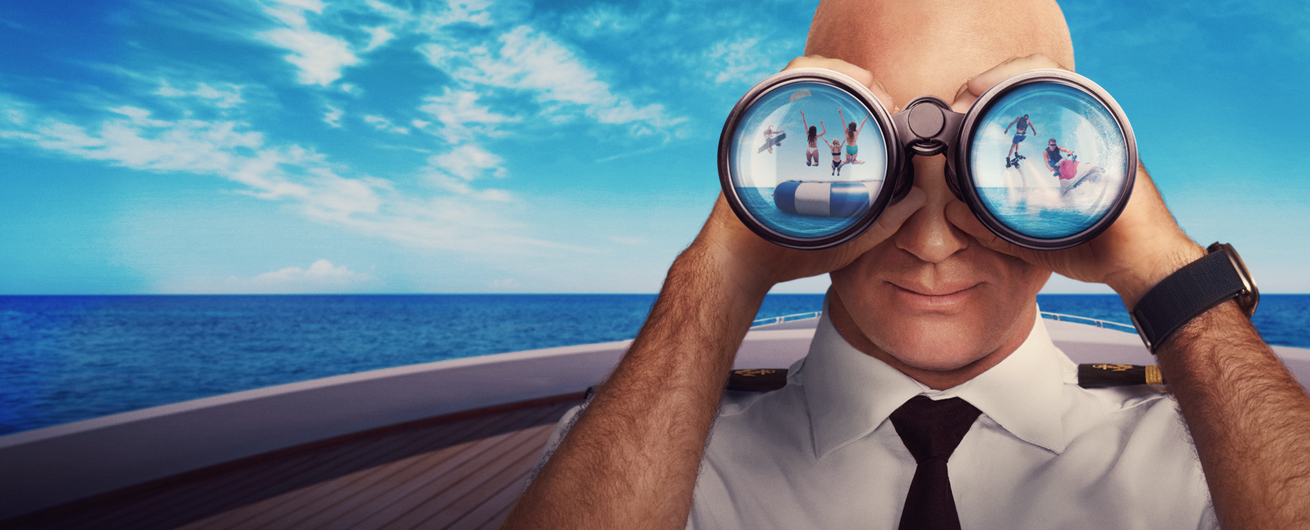
Latest Videos
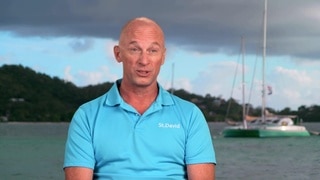
Kerry Titheradge: “Time to Do Some Captain Sh--”

The Crew Puts on a Murder Mystery Party

Fraser Olender: "We're in Deep Sh*t"
Recommended for you.

We Have a Major Update on Tom, Katie, and Katie

Kyle Says She Will Spend Christmas with Mauricio

Kim Richards Just Shocked Kyle with a New Update
- Share full article
Advertisement
Supported by
‘Below Deck’ Sails Into a New Era
With a different captain at the helm and new production elements, the reality show about charter yachts is switching up its style.

By Shivani Gonzalez
Starting a new season of “ Below Deck ” can be similar to returning to summer camp as a kid — you know it’s going to be fun and that you’ll be in the same environment, but some of the people will be different and you’re not quite sure what the vibes will be.
This time around, in particular, feels that way because for the first time in the show’s 11-season run, Captain Lee Rosbach is no longer at the helm. It’s a pivotal moment for a franchise that has become one of the most popular entities in the sprawling universe of reality TV since premiering on Bravo in 2013 . The show’s appeal was built on endless romances between various crew members (“boatmances,” as they came to be known), horrible charter guests and some sort of passive-aggressive fight about how many shackles of the anchor chain should be in the water. And there was always Rosbach presiding over the drama as he trudged around the boat, reeling off one liners like “I’m madder than a pissed-on chicken” and “we screwed the pooch so many times we should have a litter of puppies running around.”
At the center of the show now is Kerry Titheradge (the stern yet goofy captain of “Below Deck Adventure” fame), who is managing the Motor Yacht Saint David with the cheeky chief stew Fraser Olender by his side.
With that change in captain, the energy on the boat — both onscreen and off — is different, according to Olender.
“Lee has a no B.S. attitude, which I love with him,” Olender said in an interview. “With Kerry, he taught me a lot and sort of forced to me confront issues directly with my team, work them out, as opposed to making executive decisions too soon.”
This shift in management style changes the central conflict — whereas the drama once focused on the captain swiftly kicking out any unpleasant crew member (as we might have seen with Rosbach), the drama now focuses on the whole crew trying to get along (since Titheradge gives people those second chances).
Additionally, Olender noted that the captain’s relationship with the crew can also affect the drama on board.
“Captains absolutely do get involved, whether they know it or not,” Olender said, adding that for the crew, everything is about “trying to impress your captain.”
This phenomenon plays out early in the new season when the lead deckhand, Ben Willoughby, called out a fellow crew member over the radios about not wearing a life vest — something he easily could have done in private. The drama that followed became an interpersonal conflict between the two of them, both with the ultimate goal of impressing Titheradge. (Of course, the two deckhands had kissed on the previous crew night out, which is more in line with the “Below Deck” drama viewers are used to.)
For “Below Deck” showrunners, the changeovers in the cast allowed them to rethink what the show would look like.
From the season premiere, it was immediately apparent that Rosbach’s absence wasn’t the only change this season: The filming is sleeker, the daily, multicourse meals prepared by the chef are given their own glamour shots and the cameras sometimes cut to the perspectives of yachties running around on deck and through the galley.
“Our showrunner, Lauren Simms, is an avid consumer of all different kinds of media,” Noah Samton, a senior vice president of unscripted current production for NBCUniversal, said in an interview. “She pitches us different ideas on how to stylistically evoke different feelings and change the mood a little bit of ‘Below Deck’ without removing what really works.”
Moving through the rest of the season, and potentially through seasons to come, Olender is aiming to bring a cutthroat management style while also bringing affection for his stews, all with his signature British humor.
On Bravo’s side, there are changes in the works for the other “Below Deck” spinoffs — including “Sailing Yacht,” “Mediterranean” and “Down Under” — which collectively, have 26 seasons. Specifically, Samton said that “Down Under” is currently filming and that even though fans should be ready to see new things, the show will stay true to its original concept.
“These are real yachties doing a real job so you have to stay within those confines because the audience isn’t going to want anything that is too produced or fake,” Samton said. “So we have to find ways to reinvent while staying true to the original concept of the show.”
And as Olender said: “I’m sure that every year if I were to work with this franchise again, that I’ll be thrown a collection of total chaotic and disastrous stews — that’s what makes it watchable.”
An earlier version of this article misquoted Fraser Olender, the chief stew of “Below Deck.” He said, “I also feel like Kerry this season. ... Lee has a no B.S. attitude, which I love with him,” not “I feel like Kerry this season, as opposed to Lee, has a no B.S. attitude, which I love with him.”
How we handle corrections
Shivani Gonzalez is a news assistant at The Times who writes a weekly TV column and contributes to a variety of sections. More about Shivani Gonzalez
Every Far Cry Game: A Full History of Releases in Order
From pirate-infested islands to the aftermath of a nuclear apocalypse, here's the full history of far cry.
Far Cry really has done it all: a two-decade-long span of sequels set across the world, a wide range of spin-offs, and a movie adaptation. The franchise even dove into the realm of anime last year, with Captain Laserhawk: A Blood Dragon Remix bringing the neon-tinged, tongue-in-cheek world of Far Cry: Blood Dragon to Netflix. As shown in the trailer video above, we can now celebrate 20 years of Far Cry, revisiting the journey from Far Cry 1 in 2004 to Far Cry 6 in 2021.
The Far Cry series has become a fixture of Ubisoft’s lineup , quickly accumulating a long lineage of games for players to dig through. Below, we’ll carve through this lengthy history, listing every game in release order and offering newcomers a recommendation of the best place to start.
How Many Far Cry Games Are There?

Excluding remasters and ports, there are 13 Far Cry games – 12 on home console/PC and one on mobile devices. Far Cry VR: Dive Into Insanity is also excluded given its lack of accessibility — it cannot be played at home, only at Zero Latency VR locations.
Where’s the Best Place to Start?

Thanks to plenty of ports on modern consoles, Far Cry is a series with a ton of viable jumping-off points. Far Cry 3, 4, 5 and 6 can all be purchased on PlayStation 5, Xbox Series X|S, and PC, and considering each of these games are very similar in mechanics and design, they should give you a good taste of Far Cry’s approach to open-world gameplay.
That being said, Far Cry 3 and 4 are largely considered the strongest of the bunch and are great entry points for those looking to sink their teeth into the series. Either option will provide a glimpse of Far Cry at its best.
Every Far Cry Game in Release Order
These blurbs contain mild spoilers for each game, including characters, settings, and story beats.
1. Far Cry (2004)
The birth of the series, and the only entry developed by Crytek, Far Cry hit PC in 2004 and later made its way to Xbox 360 and PlayStation 3. Slotting players into the boots of former special forces operative Jack Carver, Far Cry takes place on a group of remote tropical islands swarming with trigger-happy mercenaries.
Trapped on the sunny locale’s shores after his boat is met with artillery strikes, Jack is forced to face his pursuers and embark on an adventure across the danger-filled archipelago, searching for a journalist he was escorting who mysteriously disappeared. Much like later games in the series, Far Cry focused largely on tense gun fights, stealth, and using open-ended environments to get the drop on enemies.
2. Far Cry: Instincts (2005)

In 2005, Ubisoft Montreal took over development duties on Far Cry, releasing a remake of the original game titled Far Cry: Instincts . It was exclusive to Xbox and followed the same story as the original, albeit with a fresh coat of paint and a handful of new mechanics.
Included was a trap system, which allowed players to booby trap objects to catch enemies by surprise, as well as new Feral Abilities, which gave Jack thermal vision, a powerful melee attack, increased running speed, and several other game-changing perks.
3. Far Cry Instincts: Evolution (2006)

A year later, Ubisoft released the first Far Cry sequel, Far Cry Instincts: Evolution . A direct follow-up to the story of Far Cry: Instincts, Evolution resumes the story of Jack Carver, who finds himself once again stranded on a tropical island after an arms deal gone wrong.
Framed for a murder he didn’t commit, Jack finds himself on a mission to clear his name, going up against a mysterious native chieftain and his band of fierce rebels. Alongside its fresh campaign, Evolution added additional weapons and vehicles, as well as a new slate of multiplayer maps and level-editor items.
4. Far Cry Vengeance (2006)

In December 2006, Ubisoft released its first Far Cry game on the Wii. Titled Far Cry Vengeance , it was something of a reimagining of Far Cry Instincts: Evolution, telling a similar but slightly altered story in which protagonist Jack Carver is arrested before he can make his way to the aforementioned arms deal.
The biggest difference, however, isFar Cry Vengeance offered a full suite of motion controls. Using the Wiimote, players could aim guns and perform melee attacks. The game also featured a split-screen versus mode, although Evolution’s online multiplayer and level editor didn’t make the cut.
5. Far Cry 2

Two years later, Ubisoft Montreal shifted the Far Cry series away from its supernatural origins, opting for a grittier, more grounded Far Cry 2 . The sequel took the franchise to an unspecified country in Africa, casting players as a gun-for-hire sent to find and kill an arms dealer known as the Jackal.
Arriving during an ongoing civil war, the protagonist quickly realizes catching the Jackal will require playing both sides of the conflict, prompting them to exploit the power struggle to close in on their target. Far Cry 2 was a major change of pace for the franchise, focusing on brutal combat and tough moral choices within a fully open world. Among the new mechanics was a buddy system, where players could team with AI companions who would assist them on missions.
6. Far Cry 2 Mobile (2008)

A tie-in to the console release of the sequel, developer Gameloft released a mobile adaptation of Far Cry 2 in the months following the base game’s launch. It was a loose retelling of the events reframed as a top-down, 2D shooter.
Much like the original game, players arrive in Africa to take down the Jackal, going on missions and teaming with AI partners. Due to technical restraints, the mobile port of Far Cry 2 doesn’t feature an open world, focusing on linear levels and hubs you can explore between contracts.
7. Far Cry 3 (2012)

Four years after Far Cry 2, Ubisoft returned for the franchise’s most defining entry to date: Far Cry 3 . Following new protagonist Jason Brody, the game begins with a holiday from hell, as Jason and his group of friends' skydiving trip lands them on a remote island occupied by an army of pirates.
Kidnapped by their leader, the eccentric but ruthless Vaas (played by Better Call Saul’s Michael Mando), Jason manages to escape and join up with a local rebel militia opposing Vaas and his men. With his friends still captured, Jason begins an adventure to find them and escape the island in one piece, all the while being relentlessly pursued by Vaas.
Far Cry 3 was, in a lot of ways, a turning point for the franchise, introducing several elements that went on to become staples of the series. From radio towers that reveal the map and enemy outposts the player can liberate, to the introduction of a sinister lead villain that lives to chew the scenery, Far Cry 3 was the foundation of the Far Cry formula as we know it today.
8. Far Cry 3: Blood Dragon (2013)

A year on from the release of Far Cry 3, Ubisoft launched a standalone spin-off titled Blood Dragon . Taking the series in a new, neon-infused direction, Blood Dragon was a tongue-in-cheek parody of cheesy ‘80s sci-fi action flicks, casting players as a one-liner spitting cyborg badass known as Sergeant Rex Colt.
Sent on a revenge mission to kill his former commander, Colonel Sloan, the game drops Colt into an open-world dystopian future, where he uses his arsenal of futuristic weaponry to carve a war path through cyborgs, robot sharks, and dragons that can shoot lasers from their eyes. Blood Dragon was the first of several Far Cry spin-offs which took the series to imaginative new settings. It even went on to inspire an anime series called Captain Laserhawk: A Blood Dragon Remix.
9. Far Cry 4 (2014)

A year after Blood Dragon, Ubisoft released Far Cry 4 , the next major installment in the franchise. Set in the snowy Himalayan mountains, players are cast as Ajay. Traveling to the fictional country of Kyrat to scatter his mother’s ashes, Ajay’s journey is cut short after his bus is raided by Pagan Min , a ruthless but immaculately dressed dictator who has a special interest in Ajay and his mission.
Returning to Pagan Min’s palace, Ajay manages to escape, fleeing into the countryside of Kyrat and joining the rebels in fighting back against their oppressor. As his battle against Pagan Min rages on, Ajay uncovers more about his heritage, slowly learning his mother’s past could be directly linked to the war that devastates the country.
Far Cry 4 largely built off the foundation established in Far Cry 3, adding campaign co-op, rideable elephants, a grappling hook, and a helicopter that could be used to raise hell from above.
10. Far Cry Primal (2016)

A spin-off from the mainline games, Far Cry Primal followed in the footsteps of Blood Dragon and reframed Far Cry in a wildly different setting, taking players to the prehistoric age. Centring on a hunter named Takkar, the story begins with the protagonist’s hunting party being wiped out by a sabertooth tiger, leaving him to walk the valley alone.
Determined to reunite with the other members of his clan, he sets forth on a perilous adventure, clashing with two rival tribes seeking to eradicate Takkar and his allies. Taking away the modern technology of previous Far Cry games and limiting players to clubs, bows, and other primitive weaponry, Far Cry Primal forced players to survive deadly animals , hazardous environments, and fierce rival tribes.
11. Far Cry 5 (2018)

With Primal in the rearview mirror, Ubisoft moved on to the next mainline entry in the Far Cry series, Far Cry 5 . Moving the franchise to rural Montana, the franchise's fifth entry unleashed players in the fictional wilderness of Hope County, playing as a nameless police deputy tracking an extremist cult known as Eden’s Gate.
Beginning with a player and a small squad of sheriffs attempting to arrest the cult’s leader – the sadistic zealot Joseph Seed – their mission descends into chaos after Seed’s followers free him and leave the player stranded in the wilderness. Vowing to rescue their allies and bring Seed and his lieutenants to justice, the players begin a journey across Hope County, slowly learning more about the cult’s leaders and the sinister, world-ending plot they’re concocting.
Far Cry 5 introduced several new ideas to the Far Cry formula, with players now able to fully customize their character, complete a non-linear main campaign, and, most importantly, recruit a friendly grizzly bear named Cheeseburger.
12. Far Cry New Dawn (2019)

A direct sequel to Far Cry 5, New Dawn hit consoles in 2019, envisioning an apocalyptic version of Hope County after it was struck by nuclear bombs during the previous game's climax. Set seventeen years later, the game follows a player-created captain who, alongside other Hope County survivors, belongs to a settlement known as Prosperity.
As New Dawn begins, Prosperity finds its existence threatened by a group known as the Highway Men, who seek to take over Hope County and eradicate its various factions. Searching for a means to fight back against their new enemies, the captain ventures across Hope County, eventually making contact with a powerful hidden settlement led by the man who destroyed the world: Joseph Seed.
Much like Blood Dragon and Primal, New Dawn was a reframing of Far Cry’s formula, this time dropping the game into a post-apocalyptic setting. It included new, mutated foes; the addition of supernatural abilities; and a mode called Expeditions, which allowed players to head to other parts of the U.S. to complete contracts.
13. Far Cry 6 (2021)

Two years later, Ubisoft moved away from the post-apocalypse and returned for a more traditional mainline entry in Far Cry 6 . Taking the franchise to the fictional Caribbean Island of Yara, players assume the role of Dani, a civilian attempting to escape the country due to a fierce civil war ravaging its shores.
Securing an escape route with their family via boat, Dani’s plans are thwarted after the ship is boarded by ruthless dictator Anton Castillo (played by Breaking Bad’s Giancaro Esposito), who is searching for his teenage son, Diego, among the refugees. Enraged at his son’s defiance, Anton sinks the ship, killing Dani’s family and setting the protagonist on a war path. Enlisting with the resistance and fighting against Anton’s regime, Dani joins the war, conquering Anton’s forces in a bid to confront the man himself.
Much like previous games, Far Cry 6 built on the Far Cry foundation, adding customizable vehicles, DIY super weapons, a new gear system, and back mounted rocket launchers.
What’s Next For Far Cry?

As for what’s next for Far Cry, there are currently no future projects confirmed. And, in Nov 2023, Far Cry 6 officially received its last patch after Ubisoft announced it would no longer be updating the game. However, early rumors suggest more Far Cry is likely on the way. In early 2023, two new Far Cry projects were reportedly in development, according to Insider Gaming and Kotaku: a standard sequel and a multiplayer spin-off. That being said, Ubisoft has yet to reveal anything official, so until the publisher is ready, we'll have to wait and see where Far Cry heads next.
For more lists like this, check out Assassin's Creed Games in Order , Wolfenstein Games in Order , GTA Games in Order and much more.
Callum Williams is a freelance media writer with years of experience as a game critic, news reporter, guides writer and features writer.
In This Article

IGN Recommends


IMAGES
COMMENTS
When you become a Permanent resident of Canada, you may request Transport Canada Marine Safety for procedure to obtain a Canadian Certificate of competency. ... The qualifications/training and technical knowledge required to become a CAPTAIN vary considerably (from Captain of a little boat in a harbour to Captain of a deep sea Passenger ship ...
Transport Canada Marine Safety and Security (TCMSS) Master Requirements for Canadian Seafarers. Ship's Master or popularly known as ship captain of a nautical vessel is in charge of a ship, its crew and any passengers or Cargo it carries on the water or port of call. Captain is more common in modern usage and Master is more of a historic term. Although the term is interchangeable, the ...
Equivalencies for Royal Canadian Navy competencies and certificates from Transport Canada. Transport Canada, the Royal Canadian Navy and the Department of Veterans' Affairs are working on a project that will give certain naval trades credits towards a commercial marine certificate under the Marine Personnel Regulations (MPR).. Seafarer Certification Services Modernization
Being a competitive profession, all experience and training is helpful in achieving your dream job. That's why we offer the Transport Canada-approved online boating exam preparation boater safety course. Register for the boating course now! 2020 Trans Canada Hwy, Suite 107. Dorval, QC H9P 2N4.
Welcome. The Marine Training, Examination and Certification section is responsible for the development and maintenance of Regulations, Examinations, and Training Standards for the International Convention on the Certification of Seafarers.This section also issues Certificates of Competency to seafarers after they have successfully completed all prerequisites and examinations appropriate to the ...
The most common path to a yacht's wheelhouse is by rising through the ranks in the yachting industry, starting on deck and building sea time, gaining boat handling and geographical experience, and accruing licenses. But even after the golden ticket is earned — that 500GT or 3,000GT Master license — you'll find there is more to getting ...
Here are the steps you can follow when exploring how to become a ship captain for your career: 1. Finish high school. It's beneficial to focus on courses such as calculus, trigonometry, and the sciences when in high school to prepare for more advanced classes in university.
CanadaBoatSafety.com is a BoatingBC partner, and is proud to offer an over 30% discount to obtain your boating licence. Only $28.99 for Official Transport Canada-accredited Course, Exam & Boat Licence (known as the Pleasure Craft Operator Card). Includes unlimited exam retries. Get your Canadian Boating Licence online today!
Guide to Boat Licencing. If you have previously taken a boating safety course, you may be exempt from writing the Boater Exam, under the grandfather clause. You are exempt from taking the boater exam if you have one of the below certificates. If you choose you may purchase the Pleasure Craft Operator Card that is good for life, at a cost of $29 ...
Employment requirements. This is what you typically need for the job. Some secondary school education is usually required. One to two years of experience as a fishing vessel deckhand is required. Captains require one year of service as officer in charge of the watch. A Fishing Master's Certificate is required for all occupations in this unit group.
Canada. 2024-Jan-22. CCG National Inventory - Marine and Shore-based Positions: Senior Engineering Officer. Posted By: Canadian Coast Guard Category: Relief / Temporary. Senior Marine Engineering Officer Pay: $37.28 to $47.39 hourly Benefits: An experience of a lifetime serving Canadians Uniq...
IYT operates more boating courses with more government approvals through more schools, in more countries and in more languages than any other boating organization in the world. We are proudly ISO 9001:2015 approved. International Yacht Training Worldwide is the global leader in International Certificate of Competence, Superyacht Crew training ...
One way to break into crew work is by getting real-world experience in the maritime world, adds Hollingshead. "Go and get a job in a marina, work for a boat-building company, learn about teak, painting, epoxy, etc. 10 Tips for Newbie Deckhands. "There are two main work/life experiences that I value in a candidate," he continues.
Roles and Responsibilities of a Yacht Captain. The job of a Yacht Captain can be compared to that of a CEO, CFO, and COO of a large corporation. The responsibilities are huge. On a smaller vessel of 35m or less, the captain will need to be more hands-on, and they will likely also be the engineer of the vessel.
A boat tour business will be deemed a commercial operation under the Canada Shipping Act, 2001 and therefore subject to different rules, unlike the transport Canada pleasure craft licence, which is quite easy to obtain.Any waterborne enterprise opened for the express purpose of making profit comes under the banner of commercial. The certification and licensing of commercial vessels depends on ...
2. Spend additional time training on a boat. Even though you only need 360 days of sea-time to get your license, if you want an actual job as a captain, you will usually need at least three to four years of professional experience. This experience should be directly related to the operations and management of a ship.
The Basics of a Captain's License. A first time applicant will need to decide while type of license to pursue. There are two types available to one applying for a new license. You may apply for a license to be an Operator of Uninspected Passenger Vessel (OUPV) or the more familiar "Six Pack" license.
The question of how to be a yacht captain cannot be answered without consideration for the mountain of courses for yacht crew, which must be taken in order t...
Overview. Certificates of competency, training certificates and equivalencies directly pertaining to the operation of a vessel are recognized as proof of competency when operating a boat fitted with a motor that is used for recreational purposes.The current list contains over 90 such professional certificates, courses and equivalencies.
Which Boats Require a Licence? You must have a Canadian pleasure craft licence to operate a pleasure craft powered by an engine of 10 horsepower (7.5 kW) or more in Canada legally. This includes personal watercraft and sailboats with an engine. You are exempt from this requirement if your pleasure craft is registered. If a pleasure craft has ...
2. Gain Experience. In order to obtain your license you must log at least 360 days at sea within the course of five consecutive years. A day at sea is defined as four consecutive hours. Even if you are not directly captaining or assisting the captain, the hours can still count towards your credentialing.
We have exciting yacht captain careers available! We're a leading yacht crew recruitment agency with various jobs. Apply now & start a rewarding career!
There are requirements that need to be completed before you can proceed with earning a captain's license. These include the following: 360 days on the water, at four hours each day, documented within the last five years. Pass a drug test. Pass a physical examination. Present three character references.
Captain Kerry told Jared, "The way that you're treating these guys is not acceptable, and we've had discussions, and I've tried to guide you, I've shown you compassion. But, you've got sh-t going ...
With that change in captain, the energy on the boat — both onscreen and off — is different, according to Olender. "Lee has a no B.S. attitude, which I love with him," Olender said in an ...
Searching for a means to fight back against their new enemies, the captain ventures across Hope County, eventually making contact with a powerful hidden settlement led by the man who destroyed the ...